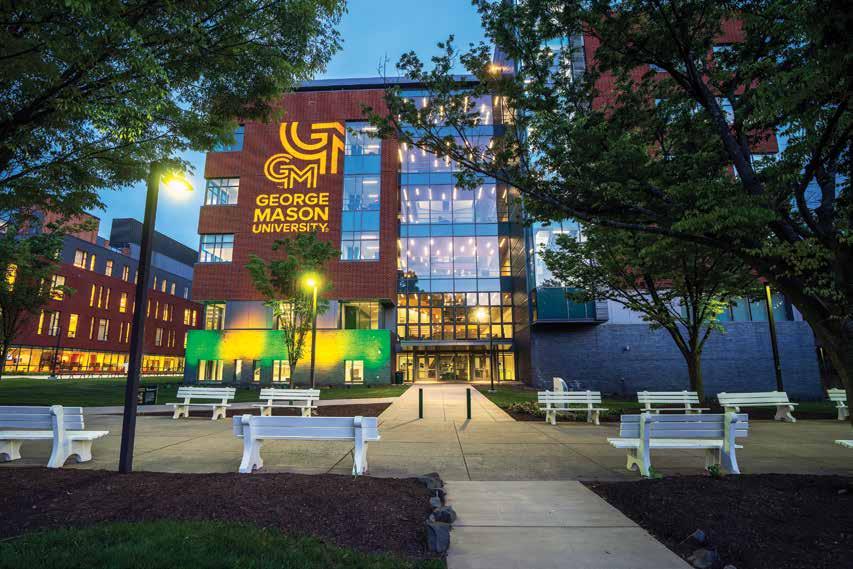




Nearly 11,000 degrees and certificates were conferred at this year’s Spring Commencement on May 11. COMMENCEMENT 2024 Get the details about the Class of 2024 on page 7.






Nearly 11,000 degrees and certificates were conferred at this year’s Spring Commencement on May 11. COMMENCEMENT 2024 Get the details about the Class of 2024 on page 7.
ABOUT THE COVER Global education is an important part of preparing students for careers in an interconnected world.
Photos by Getty Images
CONNECT WITH GEORGE MASON UNIVERSITY
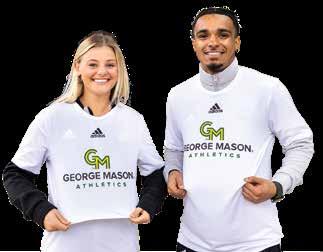
NEW LOOK, SAME PATRIOT PRIDE
The campus bookstore is your one-stop shop for refreshing your Patriot Pride. Shop in person at the Fairfax Campus or online at gmu.bncollege.com . Scan the QR codes you’ll find throughout #MasonNation • gmu.edu the magazine with your smartphone’s camera app for associated websites with @georgemason @georgemasonu more details. @georgemasonu @georgemasonuniversity
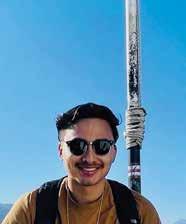
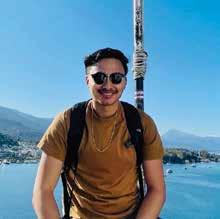

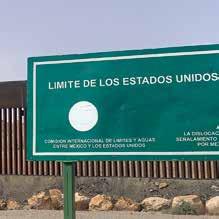
Next Stop, the World
Expanding and enriching George Mason’s global footprint is a priority as the university prepares students for success in an increasingly international and interconnected world.
Mason Korea Turns 10
Mason Korea launched in Songdo in March 2014 as part of the Incheon Global Campus, a national project established by the Korean government and Incheon Metropolitan City to nurture the next generation of global leaders.
Exploring
For more than 20 years, the Schar School of Policy and Government has been taking students to the U.S.–Mexico border for an in-depth look at the challenges associated with the region.
42 From the Alumni Association President ALUMNI PROFILES
40 Jamie VanValkenburg, BM ’97, MM ’00
43 Nicole Lynn Lewis, MPP ’06
45 Gary T. Taylor, MSW ‘15
48 Retro Mason
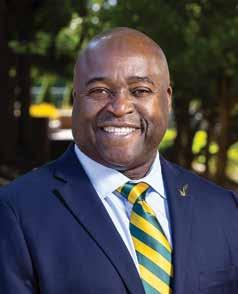
This year George Mason University marks the 10th anniversary of Mason Korea on the Incheon Global Campus in Songdo. Like George Mason itself, Mason Korea has come a long way in a short time, serving students, the university, and the Commonwealth of Virginia by creating opportunities in global education that have attracted talent and established new partnerships around the world.
Mason Korea opened with 34 students and two undergraduate programs. It now has more than 1,000 students from 18 countries, six undergraduate programs, and two graduate disciplines. Attending a top 50 U.S. public university in the dynamic Seoul and Washington, D.C., regions is an attractive combination for students, who typically spend three years at Mason Korea and one year stateside. It’s also a winning combination for employers eager to hire graduates who are prepared to work, collaborate, and lead across cultures.
In this issue of Spirit, you can read about a few of our Mason Korea success stories, and a lot more about that campus and our international academic opportunities.
While visiting Mason Korea in June for the 10th anniversary celebration, I met with several government and business leaders who reafirmed their support for George Mason’s campus there and its continued growth and prosperity.
Mason Korea is our most prominent international connector for global education, a launch point into—and out of—Asia. The Washington, D.C., area has the third-largest concentration of Korean Americans in the country. The Modern Language Association reports declining enrollments in languages other than English between fall 2016 and fall 2021, but enrollments in Korean increased by 38.3 percent. Mason Korea places George Mason—and our students—in an advantageous position.
One example of collaboration and knowledge exchange between our U.S. and Korea campuses is the Center for Security Policy Studies, with research centers in both locations. These centers connect the policy worlds of Seoul and Washington, D.C., and facilitate discussions regarding security issues in the Indo-Pacific.
Mason Korea is also one of the ways in which we draw talent to Virginia—talent that in many cases comes here and stays. Some 29 percent of out-of-state students settle in Virginia after graduating from George Mason. That’s 45 percent higher than the state average.
These students, many from outside the country, attend George Mason at no cost to the state, and then stay here and use their knowledge and talents to innovate, start businesses, pay taxes, and strengthen our communities. It’s a windfall for Virginia. This past May, George Mason graduated students from 114 countries.
Although Mason Korea and our stateside campuses are a 13-hour flight apart, they are aligned in mission. Based on student interest, we are exploring opportunities and partnerships in other countries. Our growing global education portfolio is just one of the many ways in which this university is on the move.
Gregory Washington
President, George Mason University
MANAGING EDITOR
Colleen Kearney Rich, MFA ’95
ART DIRECTOR
Joan Dall’Acqua
ASSOCIATE EDITORS
Melanie Balog
Priyanka Champaneri, BA ’05, MFA ’10
Anne Reynolds
EDITORIAL ASSISTANT
Katarina Benson
CONTRIBUTORS
Jennifer Anzaldi
Shayla Brown
Teresa M. Donnellan
Mariem El Gazzah
Hannah Foley
Sarah Holland
John Hollis
Aidan Jacobs
Nathan Kahl
Rebecca Kobayashi
Seihoon Lee, BA ‘23
Achim Loch
Katie Maney
Buzz McClain, BA ‘77
Ryley McGinnis
Amanda Milewski
Lauren Clark Reuscher, MA ‘12
Corey Jenkins Schaut, MPA ’07
Pam Shepherd
Jae Hee Suh
Michelle Thompson
Preston Williams
GRAPHIC DESIGN
Claire Brandt
Jeeun Lee Namgoong
Michaela Reilly, BA ‘21
Azriel Towner, BFA ‘19
PHOTOGRAPHY AND MULTIMEDIA
Ron Aira
Melissa Cannarozzi, MA ‘22
Evan Cantwell, MA ’10
Eduardo Macedo
Ayman Rashid
Cristian Torres
PRODUCTION MANAGER
Brian Edlinski
EDITORIAL BOARD
Stephanie Aaronson, BA ‘94
Deputy Vice President for Communications and Digital Strategy
Paul G. Allvin
Vice President for University Branding and Chief Brand Oficer
Trishana E. Bowden
Vice President for Advancement and Alumni Relations
Robin Rose Parker
Assistant Vice President for Communications
Jennifer W. Robinson, JM ‘02
Associate Vice President for Alumni Relations
I just finished reading the article “A Symbolic Gift Celebrates Brothers’ Success” in the spring 2024 Mason Spirit. I was totally impressed by those two billionaire brothers, asking Mason to name a trash can in their honor because it represented their working their way through college!
Way to go, guys!
Marianne Hudar, BA History ’85




Find out more at alumni.gmu.edu. COMING TO A TOWN
Letters to the editor are welcomed. Send correspondence to Colleen Kearney Rich, Managing Editor, Mason Spirit, 4400 University Drive, MS 2F7, Fairfax, Virginia 22030.
Or send an email to spirit@gmu.edu.
Need to change your address or update contact information with us? Or prefer not to receive the magazine in the mail any longer? Just let us know via email at development@gmu.edu.
The Mason Nation is on the move! Be on the lookout for George Mason University Alumni Association tour stops this fall in Florida, North Carolina, South Carolina, Texas, and more!
• SEPTEMBER—Charleston and Myrtle Beach, South Carolina
• OCTOBER Huntsville, Alabama; Miami and Tampa, Florida; Atlanta, Georgia; Chicago, Illinois; Cleveland, Ohio; and Pittsburgh, Pennsylvania
• DECEMBER—Raleigh and Charlotte, North Carolina
George Mason University s Alumni Association hosts events for the Mason Nation throughout the year, creating innovative and memorable experiences for the entire university community.

Keep updated on what’s going on
WELCOME TO GEORGE MASON UNIVERSITY’S NEW BRAND LOOK—one that encompasses all that we are as Virginia’s All Together Diferent university.
The evolution of George Mason’s brand reflects who we are today: a national top 50 public university that exemplifies a new kind of leadership in higher education. We choose inclusive excellence over exclusive status, recognize that talent is equally distributed among humanity but opportunity is not, and intentionally act as a great equalizer by creating space enough for everyone.
Our new logo exemplifies the values and vision that fueled our rise and will continue to launch us into the future. It’s a new look for a new leading university—and a new way to show of your Patriot Pride.
Go, Patriots!
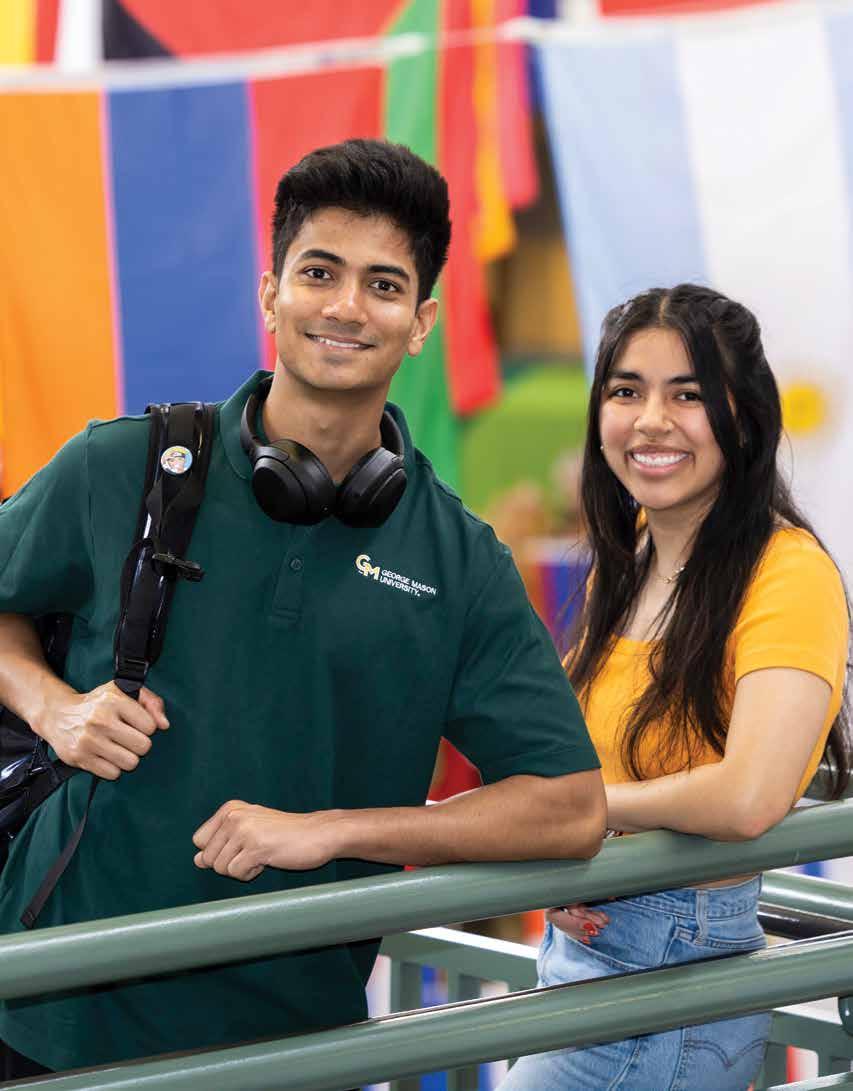
GEORGE MASON’S ARMY ROTC PATRIOT BATTALION BOASTS NEARLY 150 CADETS AND CONTINUES TO GAIN RECOGNITION. LEARN MORE AT go.gmu.edu/ROTC
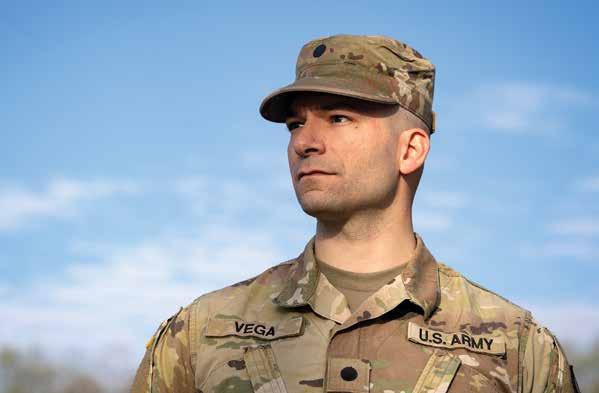
BRYAN VEGA NEVER EXPECTED that, at 33 years old, he would be named the number one U.S. Army Reserve Oficers’ Training Corps (ROTC) cadet in the country. But if Vega, a George Mason graduate student working on a master’s in data analytics engineering, has learned anything, it’s that he can never count himself out.
Vega’s path started with a dream to become a U.S. Army oficer. He enlisted in the Army National Guard almost 15 years ago as a student in the ROTC program at Ohio State. However, switching majors made it dificult for Vega to meet the commissioning requirements prior to graduating.
After earning his degree, he continued his work with the Army National Guard. “Everything happens for a reason, so I was just waiting for the right opportunity to take that next step toward being commissioned as an oficer,” he says.
In 2018, Vega was accepted into the National Guard’s first, and only, cyber brigade. “I had developed an interest in the coding, data science, and artificial intelligence side of things during my work in military intelligence with the Army National Guard and in my civilian career,” he says. “The cyber brigade felt like the right move.”
It was. The connections he made in the 91st Cyber Brigade encouraged him to pursue commissioning through ROTC, for which he was still eligible.
“I decided to knock two things out at once: oficer status and a master’s degree. George Mason had both a good ROTC program and a strong artificial intelligence and machine-learning education pipeline.”
So how does one become the number one ROTC cadet in the nation? The Order of Merit List ranks every cadet via a points system. Throughout the year, cadets earn points in diferent categories—such as physical fitness, GPA, and employment status. At the end of the year, the points are tabulated and every ROTC cadet across the nation is ranked.
“I was shocked, honestly,” Vega says of being ranked number one. “I’m not as fit as younger members. I didn’t think I had a chance. It just goes to show what you can accomplish with the right support.”
Vega says the George Mason Army ROTC Program has supported him through full-time employment with his civilian career, part-time service with the National Guard, his growing family, and his rigorous degree program. As a university renowned for providing veterans with quality education, George Mason’s support of post-traditional students in ROTC is a testament to the university’s commitment to inclusive and accessible education and career opportunities.
Vega agrees that George Mason ofers something diferent. “Having been in ROTC at another institution, I can say that George Mason ROTC’s flexibility and adaptability is incredible. And my advisor has worked hard to find classes for me that will make sure I complete the degree on time while being able to work full time and fulfill all my duties as a cadet, a husband, a father, and a member of the [National Guard].”
—Sarah Holland
TOTAL DEGREES AND CERTIFICATES CONFERRED
~10,888
BACHELOR’S DEGREES
114
COUNTRIES
50 REPRESENTED
STATES REPRESENTED PLUS THE DISTRICT OF COLUMBIA, U.S. VIRGIN ISLANDS, AND MILITARY APO
6,138 MASTER’S DEGREES 3,578 LAW DEGREES
207
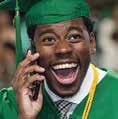
24%
FIRST-GENERATION
BACHELOR’S DEGREE RECIPIENTS

TOP FIVE
UNDERGRADUATE MAJORS
Business
Information Technology
Psychology
Computer Science
Criminology, Law and Society

TOP FIVE
MASTER’S DEGREES
Computer Science, MS
Data Analytics Engineering, MS
Special Education, MEd
Curriculum and Instruction, MEd
Business Administration, MBA
TOP FIVE
DOCTORAL DEGREES
Education
Economics
Psychology
Writing and Rhetoric
Computer Science
PHOTO BY RON

IN SUMMER 2023 , the Mason Nation mourned the loss of one of its most steadfast friends. Amy Takayama-Perez, BA Sociology ’96, MEd ’02, worked for many years to welcome students to George Mason University—first as a director of recruitment and later as a leader in George Mason’s Admissions Ofice, culminating in her role as dean of admissions, a position she held for nearly eight years. In July 2023, she passed away following a two-year battle with triple-negative breast cancer.
“She just loved George Mason,” says Rick Perez, her husband. “And she loved the students she was working with.”
Takayama-Perez came to George Mason as a transfer student from the University of Connecticut and began as a student worker in the Admissions Ofice. That position led to her first job following graduation as a roadrunner, recruiting on behalf of the university in the Northeast.
“She did such a great job building that out that she was ofered a counselor role,” says Perez. “She just kept going.”
George Mason’s mission of inclusion was one that drove Takayama-Perez. “Her motto was, ‘Let’s build a bigger table,’” says Perez. “Let’s find a place for first-generation students, for kids who just need to be given an opportunity.”
“Amy was a bright light for students and for her colleagues. She never wavered from a commitment to either group’s well-being,” says David Burge, vice president for enrollment management.
She was also an enthusiastic alum. TakayamaPerez’s dedication to her alma mater included her service as a faithful member of the George Mason University Alumni Association Board of Directors. To honor her, the association’s board established the Amy Takayama-Perez Memorial Student Book Award, a scholarship that helps to defray the expense of students’ books and supplies.
The Alumni Association announced the establishment of the book award just prior to Mason Vision Day on April 4. And donors responded, raising more than $25,000 for the new fund.
“The goal is to help as many students as possible, just as Amy worked to do in her time at George Mason,” says Jenn Robinson, JM ’02, associate vice president of alumni relations. “This is a tribute befitting a double alum who was passionate about all things George Mason, a former board member who meant so much to the university.”
—Anne Reynolds
LAST FALL , George Mason students, faculty, and staf gathered to help plant the beginnings of a “food forest”—1,700 plants of more than 50 native species— into two groves near the stream behind Student Union Building I, on what used to be the site of the Student Apartments, which were razed in 2018.
“We are planting America’s first campus-based native food forest dedicated to feeding both human and animal foragers,” says George Mason professor Dann Sklarew, PhD Environmental Science and Public Policy ’00, of what has been aptly named the Foragers’ Forest.
Like most things in the university’s Living Lab, science helped drive many of the decisions, according to lead forest maker Sarah Roth, MS Environmental Science and Policy ’24.
Roth, who graduated in May, led the project with Sklarew and University Sustainability Program manager Doni Nolan, BA Biology ’14, and with administrative support from the College of Science, George Mason Facilities, and University Sustainability. The forest was also made possible with a grant from Amazon Web Services, which the university matched.
Roth’s designs for the Foragers’ Forest are based on the work of Japanese botanist and forest ecologist Akira Miyawaki. Designed to create forest cover quickly on degraded land, Miyawaki’s method emphasizes using native plants and trying to reconstruct natural plant communities.
Roth says the Miyawaki method also encourages mixing the species and planting very densely—around three trees or shrubs per square meter— to mimic natural patterns of forest regeneration.
“We were surprised to see how many edible or food-producing plants are native to Fairfax County—strawberries, blueberries, black raspberries, hazelnuts, persimmons, and even American chestnuts,” says Roth. “We surrounded our tree clusters with a native meadow that will support pollinators and other meadow-dependent wildlife.”
The site will also serve as a new Living Lab space where students can experiment and “act local” to promote food security, wildlife conservation, and climate resilience, and create other opportunities to advance sustainability.
Pathways, seating, and signage will lead visitors to forage, learn about the site’s principles and propagation, and enjoy the scenery. The Foragers’ Forest joins a prestigious group—more than 3,000 Miyawaki forests have been successfully planted globally.
“What I love about this project is that it blends everything I’m passionate about: native plants, ecological restoration, and bringing people closer to nature,” says Roth, who is now a landscape architect for Fairfax County’s stormwater planning division. “We hope this ofers a blueprint others can take and improve on.”
—Colleen Kearney Rich, MFA ’95
Laura Powers and Tracy Mason contributed to this story.
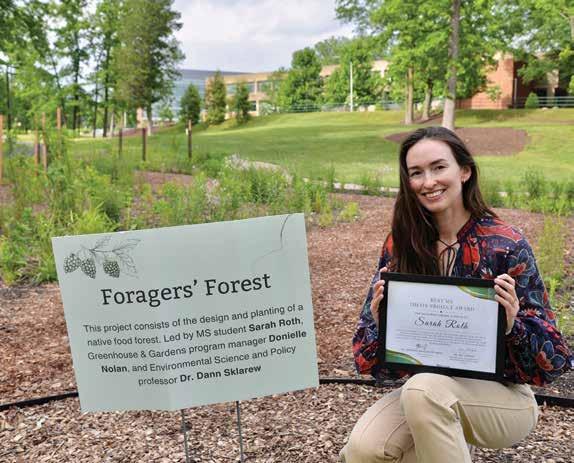
PHOTO BY RON AIRA
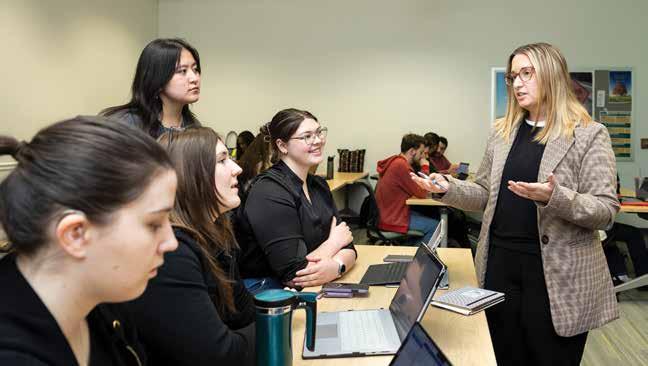
GEORGE MASON STUDENTS worked with the U.S. State Department’s Diplomacy Lab to find out what motivates individuals to study abroad, specifically in southeastern South Korea.
The students were part of the GLOA 400 Applied Approaches in Diplomacy capstone course taught by Cortney Hughes Rinker, director of George Mason’s Global Afairs Program. Diplomacy Lab, a publicprivate partnership between the State Department and a network of U.S. academic institutions, provides students an opportunity to participate directly in solving real-world problems. George Mason is one of six universities in Virginia to participate.
Students collaborated on two projects. The first aimed to help the Busan Consulate increase the number of U.S.-based students who study abroad in the city of Busan, which is roughly 150 miles outside of Seoul. The second project aimed to address allegations of violence by security forces in Senegal.
The Busan study-abroad project was especially interesting to the class, which included several students from Mason Korea.
“This was an excellent project for our program because it’s similar to one of the goals of the Global Afairs Program, which is to get more Fairfax students to attend Mason Korea,” says Rinker.
Students received guidance on each project from an advisory board of faculty members with expertise either in the region or on the topic. Advisory board member Soyoung Kwon, associate professor of global afairs and director of security policy studies–Korea, helped advise the Busan group on research
methodologies, ofering insights on relevant topics and facilitating connections with external partners, such as the U.S. Consulate in Busan.
Kwon, who has taught GOVT 342 Diplomacy at Mason Korea since 2017, says that this partnership exposes George Mason students to diferent approaches to diplomacy and teaches them about the most efective strategies while being part of a public diplomacy project.
“This course has shown me how to communicate with people at the intersection of higher education and diplomacy,” says Mason Korea graduate student Seihoon Lee, BA Global Afairs ‘23, who is working on a master’s degree in higher education and student development. “Being a bilingual and bicultural student, I always seek opportunities to be a bridge that brings these worlds together.”
Lee says George Mason’s diversity and the mix of ethnic and non-ethnic Korean students led to lively discussions. “We had very intense conversations about how we should approach this project and our research questions, and it was really stimulating.”
Rinker and her students traveled to Washington, D.C., for the Diplomacy Lab Fair this April to present the projects with the other participating universities.
“We hope to expand the partnership in the future so that other students and faculty members can become involved in the Diplomacy Lab,” says Rinker.
—Shayla Brown
GEORGE MASON PRESIDENT GREGORY
WASHINGTON has named James Soto Antony as the university’s new provost and executive vice president. A nationally recognized higher education scholar and leader, Antony began this new role on July 1.
“We searched the nation for the very best provost for George Mason University, and James Antony was our number one choice,” Washington says. “He has the perfect mix of academic credentials, knowledge, and temperament to lead our academic enterprise as this university takes its place as one of America’s new leaders in higher education. I look forward to having Jim on the team.”
Antony comes to George Mason from the University of California San Diego, where he served as dean of graduate education and postdoctoral afairs and was a professor of education studies with a secondary appointment in the Rady School of Management. At UC San Diego, he led a transformation of graduate and professional student financial support, created infrastructure to advance student professional development, prioritized student access and opportunity, and launched grant-funded initiatives to improve mentoring.
“George Mason University is an inspiring studentsfirst institution that prioritizes inclusive access and opportunity. As a first-generation college student from a low-income family, this resonates deeply with me,” Antony says.
As provost and executive vice president, Antony will help cultivate a dynamic and forward-thinking academic environment and advance academic excellence, research, and scholarly pursuits in alignment with George Mason’s core values and strategic direction. He will oversee all colleges, schools, and academic support units.
“As a young top 50-ranked university with significant research investments, George Mason is on a fast track as one of the most compelling institutions in the nation,” Antony adds. I look forward to being part of the Mason Nation helping to advance
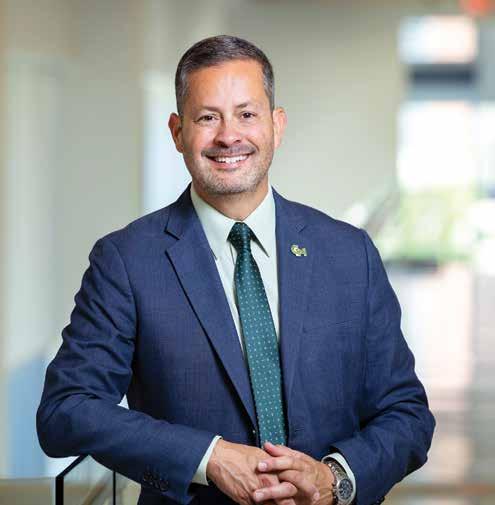
student, faculty, and staf successes and collaborating to continue the university’s rise as a world-class research university.”
A national search was conducted from September through March, following the departure of Mark Ginsberg, now president at Towson University.
Antony earned his bachelor’s degree in psychology and his master’s degree and PhD in higher education and organizational change from the University of California, Los Angeles.
BY
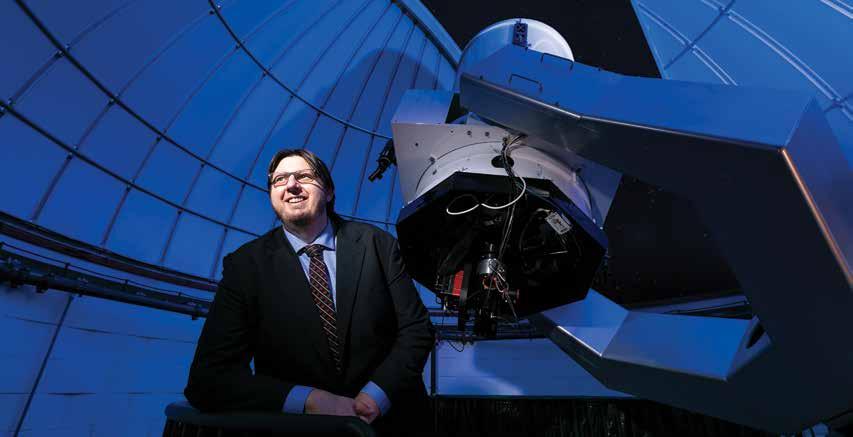
Astronomy professor Peter Plavchan in the George
Mason Observatory.
SCIENTISTS KNOW THE UNIVERSE IS EXPANDING , which is measured by calculating the brightness of numerous stars and by the number of photons-per-second they emit. But the next breakthroughs will require more accurate measurements, and that’s where George Mason is stepping in. The university is leading Landolt, a $19.5 million NASA space mission that will put an artificial “star” in orbit around Earth.
Here’s what’s to come:
LEARN MORE
1. Led by astronomy professor Peter Plavchan, faculty members and students from the College of Science and the College of Engineering and Computing will work together with staf from NASA, the National Institute of Standards and Technology (NIST), and nine other organizations on a first-of-its-kind project for a university in the Washington, D.C., area.
2. The artificial star will allow scientists to calibrate telescopes and more accurately measure the brightness of a wide range of stars—from those nearby to the distant explosions of supernovae in far-of galaxies. By establishing absolute flux calibration, the mission will begin to address several open challenges in astrophysics including the speed and acceleration of the universe’s expansion.
3. The mission is named for late astronomer Arlo Landolt, who compiled the widely used catalogs of stellar brightness through the 1990s.
4. The payload, which is the size of a proverbial bread box, will be built in partnership with NIST, a world leader in measuring photon emissions. “This calibration under known laser wavelength and power will remove efects of atmosphere filtration of light and allow scientists to significantly improve measurements,” says electrical engineering professor Piotr Pachowicz, who is leading this component of the mission.
5. The artificial star, expected to launch in 2029, will orbit 22,236 miles above Earth, far enough away to look like a real star to telescopes back on the ground. This orbit also allows the star to move at the same speed as the Earth’s rotation, keeping it in place over the United States during its first year in space. “This is what is considered an infrastructure mission for NASA, supporting the science in a way that we’ve known we needed to do but with a transformative change in how we do it,” says Plavchan.
“This mission marks another first for George Mason, a milestone that proves our impact as a major public research university that truly knows no bounds,” says President Gregory Washington.
ONCE A YEAR , George Mason invites the Mason Nation to unite in philanthropy on Mason Vision Day. This year, on April 4, the university community did so enthusiastically and raised $1,309,345 for students, research, and programs.
“Mason Vision Day broke the record!” says Trishana E. Bowden, president of the George Mason University Foundation and the university’s vice president for advancement and alumni relations. “Mason Nation came together, and the impact of the generosity of alumni and donors is truly inspirational.”
For this year, the Ofice of Annual Giving encouraged donors to support the causes that matter most to them and that resonated with their own priorities, from academic disciplines to student scholarships, and athletics to the arts.
On the day of the event, George Mason’s University Life division announced a $500,000 gift from a longtime friend of the university to the Early Identification Program (EIP), which supports access to higher education for first-generation students.
“This gift is a game-changer,” says Rose Pascarell, MA Sociology ’92, vice president for University Life. “One of the university’s goals is to double the number of students served by EIP, and this incredible gift truly sets us on our way.”
Alumni participation in Mason Vision Day was particularly strong and accounted for 40 percent of the gifts.
“It’s the engagement that is absolutely vital,” says Bowden. “It’s that coming together that allows us to make a huge diference. Every individual who joined in to give on Mason Vision Day played a role in creating a wave of support that will be felt now and into the future. We are so very grateful.”
—Anne Reynolds
1,678
S115,000 IN CHALLENGE GIFTS
46
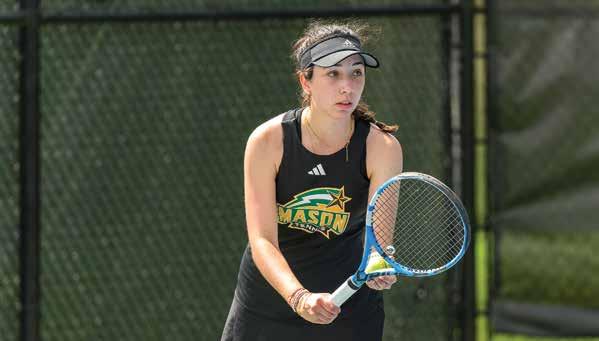
WHEN GEORGE MASON WOMEN’S TENNIS COACH Steve Curtis got an email from Sorbonne Université student Maïlys Faur asking to join his team as an exchange student, he did not think it was possible, but he was eager to check with the academic and compliance ofices.
“The initial thought was she may not be eligible because she’s not working toward a degree at George Mason, and there are all these complex NCAA rules,” says Curtis.
The deputy athletic directors started looking into it and found a way to make it work. Faur, who hails from Toulouse, France, was able to join the Patriots women’s tennis team for the academic year.
Faur’s tennis career started by accident when she confused badminton and tennis as a child.
“When I was little, I played a lot of badminton with my family in the garden,” says Faur. “So, when my mom asked if I wanted to play a sport, I said, ‘Yes, I want to play tennis,’ but I meant badminton.” She ended up on the tennis court and never looked back.
Faur played competitively with a tennis club through high school, but collegiate tennis programs exist only in the United States. When she went to university in Paris, she found a tennis club where she could play casually, but she could not compete the same way she used to.
One of the academic requirements at the Sorbonne is an exchange year at another school, so when Faur was considering where she wanted to go, she knew she wanted it to be in the United States so she could play tennis.
The first exchange student on a varsity team at George Mason, Faur’s grit and perseverance have helped pave the way for future international student-athletes.
“It was such a great experience, I loved it,” says Faur, who returned to France in May to finish her degrees in political science and literature at her home university. “Coach Curtis and all my teammates were so welcoming. I’m going to miss it so much.”
—Hannah Foley
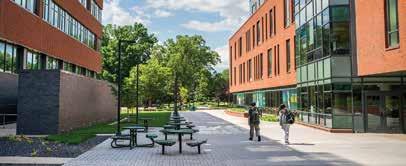

DOUG MCKENNA
A STUDENT’S TIME at the university may only last a few years, but their records last forever, thanks to the work of the registrar.
“I’m responsible for maintaining the student record in perpetuity,” says George Mason registrar Doug McKenna. “At the core, the Ofice of the University Registrar is the steward of student academic data.”
A Full Catalog of Work: The Ofice of the University Registrar serves a broad range of functions. Publishing the course catalog, building the schedule of classes, performing degree audits, completing veterans’ certifications, issuing transcripts, and awarding degrees are just some of the ways the ofice serves the university community.
Witnessing the Milestones: McKenna describes his ofice as a tremendous vantage point of the institution, touching key moments across a student’s academic journey. “I know it sounds trite, but one of the reasons that I love being the registrar is that very few days in a row are the same,” he says.
Meeting Modern Needs: At the largest and fastest growing public research university in Virginia, there are challenges, too. “George Mason is catching up in terms of leveraging technology for administrative processes,” says McKenna. His ofice has been working to convert paper forms into dynamic digital workflows, making processes like grade changes and credit overloads faster and more eficient. McKenna says these changes save time for students, faculty, and staf.
PHOTO BY RON AIRA
Learning for Life: McKenna has a unique perspective as registrar: he is also a George Mason student, pursuing a PhD in education with a specialization in higher education. “I think it’s important that I continue to study and learn as much as possible about the industry in which I work,” McKenna says. “And to model lifelong learning for my staf.”
Perfecting That Work/Life Balance: “I’m on a kind of ‘dance remix’ version of the PhD, taking one course at a time while working full time and parenting full time,” he says. “My goal is to be finished before my son, who is currently in high school, graduates from college.”
Registrars Assemble: Beyond George Mason, McKenna holds an influential role in the realm of university registrars. He helps train new registrars through the American Association of Collegiate Registrars and Admissions Oficers. He also started hosting its podcast, For the Record, in 2019. “I love hosting it, because it’s given me the opportunity to talk to and learn from so many really smart and capable people.”
A Dedicated Team: No matter what each day brings, McKenna’s colleagues inspire and motivate him. “Hands down, George Mason has the best people who are passionate about supporting student success, who care, who are engaged, and who are fun,” he says. “There’s a real sense of joy about the work that we’re doing here.”
—Lauren Clark Reuscher, MA ’12

THE STAR OF THE UNIVERSITY’S MASON AUTONOMY AND ROBOTICS CENTER (MARC) opening event was a dog-like Boston Dynamics quadruped that opened doors, entertained guests, and helped hold the green ribbon for President Gregory Washington and MARC codirectors Missy Cummings and Jesse Kirkpatrick to cut. The new
facility in Research Hall includes a two-story aviary for drone testing, laboratories, and collaboration spaces. It will be used by numerous colleges across the university for multidisciplinary projects. George Mason is also launching a graduate certificate in responsible artificial intelligence in fall 2024 and creating a PhD in robotics.
As part of a federal priority to address health care workforce shortages, George Mason’s Center for Health Workforce has received $921,000 in federal funding from the Health Resources and Services Administration to serve as a facilitator for regional health workforce planning and development. The new funds, made possible with the support of U.S. Senators Mark Warner and Tim Kaine, will help the center expand to support all nine GO Virginia regions. GO Virginia is a bipartisan, business-led economic development initiative focused on changing the way Virginia’s diverse regions collaborate on economic and workforce development activities.

BY
SEPT 12
WOMEN’S SOCCER:
GEORGE MASON VS. LIBERTY
Fans will receive a George Mason scarf.*
GEORGE MASON STADIUM
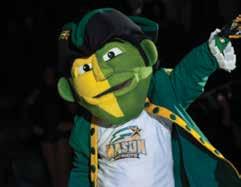
OCT 18
MASON MADNESS
SEPT 20–21
GAMEMASON
CENTER FOR THE ARTS
SEPT 27
WOMEN’S VOLLEYBALL:
GEORGE MASON VS. VCU
Join us for the Athletics Pride game. Fans will receive a George Mason pride shirt.*
RECREATION ATHLETIC COMPLEX (RAC)
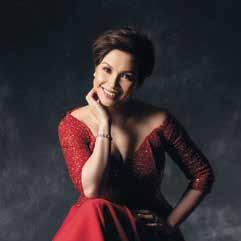
SEPT 28
ARTS BY GEORGE!
Annual benefit featuring the remarkable talents of Mason Arts students, culminating with a performance by award-winning singer and actress Lea Salonga.
Center for the Arts
* WHILE SUPPLIES LAST
Celebrate the start of the men’s and women’s basketball season. Mason Madness is free to attend and does not require tickets
EagleBank Arena
SEPT 28
MEN’S SOCCER: GEORGE MASON VS. GEORGE WASHINGTON
Fans will receive a George Mason drawstring bag.*
GEORGE MASON STADIUM
OCT 5
BALLET HISPÁNICO
CENTER FOR THE ARTS
OCT 8
MASON CHOIRS FALL CONCERT 2024
CENTER FOR THE ARTS
OCT 19
WOMEN’S VOLLEYBALL: GEORGE MASON VS. RHODE ISLAND
Fans will receive a free women’s volleyball 50th anniversary cup.*
RECREATION ATHLETIC COMPLEX (RAC)
OCT 26
VILLALOBOS BROTHERS
HYLTON PERFORMING ARTS CENTER NOV 1–3
110 IN THE SHADE CENTER FOR THE ARTS NOV 8–9
FALL: NEW DANCES 2024 CENTER FOR THE ARTS
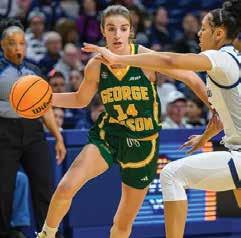
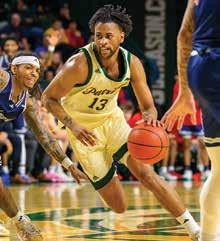
NOV 4 & 9
GOLD RUSH
Gold Rush is an annual celebration of the season’s first home basketball games of the year.
NOV 4 | Men’s Basketball: George Mason vs. North Carolina Central NOV 9 | Women’s Basketball: George Mason vs. Towson
EagleBank Arena
George Mason University is educating global citizens to succeed in an increasingly interconnected international society and economy.
1,342
ABROAD IN 2022–23
At this moment, there is a member of the Mason Nation on just about every continent of the globe: conducting research, mastering a language, learning a new skill, and acquiring new knowledge.
For decades, George Mason University has advanced global learning opportunities and fostered international research. We have leveraged partnerships like INTO George Mason University to bring thousands of international students to the university from more than 130 countries and speaking 80 languages, while providing courses in nearly two dozen countries each year through the Global Education Ofice (GEO).
This year marks the 10th anniversary of the university’s campus and operations in South Korea (see story on page 24). Mason Korea launched in Songdo in March 2014 as part of the Incheon Global Campus, a national project established by the Korean government and Incheon Metropolitan City to innovate the Korean education system and nurture the next generation of global leaders.
More than 1,000 students, representing more than 18 countries, are currently studying at Mason Korea, and that success has led to conversations exploring similar partnerships.
“I’ve always appreciated that Mason’s U.S. campuses are so international. So when students from our U.S. campuses go to Mason Korea, they are not encountering an international campus for the first time, but diferent kinds of internationalism,” says Robert Matz, outgoing dean of Mason Korea. “This shared—but diferent— internationalism in one reason I think Mason Korea has been so successful.”
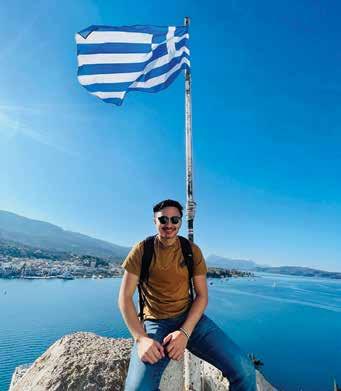
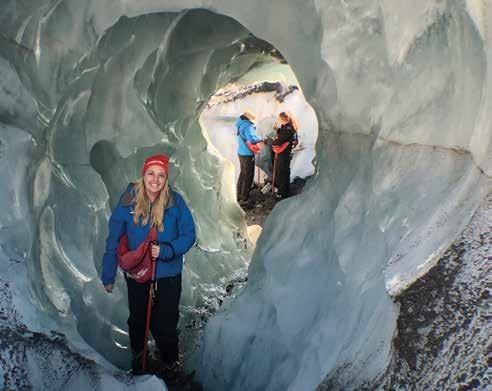
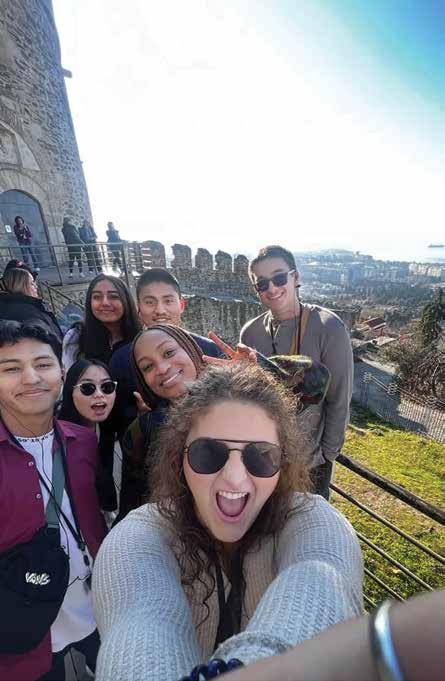
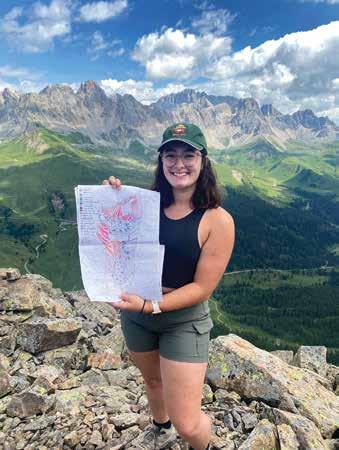
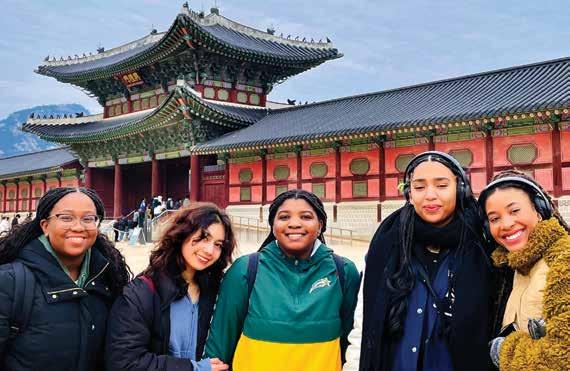

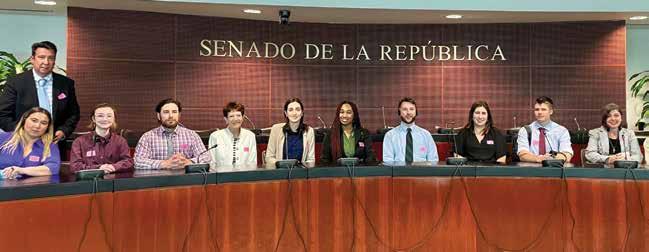
It is all part of George Mason’s long legacy of preparing students for success in an increasingly international and interconnected world. Expanding and enriching George Mason’s global footprint is a priority—making it critical for the university to reimagine and redesign George Mason’s global vision and establish a path forward.
Enter Chrishon Blackwell, an organizational development leader with a deep understanding of international education, as the senior international oficer and executive director of GEO.
Since arriving at George Mason in 2023, Blackwell has been identifying how to leverage the university’s resources and further enhance the student experience while simultaneously exploring ways for the university to maintain global competitiveness and strengthen relationships with its global partners.
“The goal is to create stronger global citizens, and to do that it is critically important to identify, help facilitate, and advance what’s already happening
on campus,” says Blackwell. “If GEO is to provide students opportunities to immerse themselves in holistic activities that result in individuals who can compete on [an] international scale, we need to think more intentionally about what impacts them across the disciplines.”
GEO ofers a variety of study-abroad options, ranging from short-term to semester-long experiences. The programs are organized into four distinct categories.
These are the traditional study-abroad experiences that many George Mason alumni remember. As the name suggests, George Mason faculty lead these programs, which usually run over winter break, spring break, and during the summer. A few programs are ofered for an entire semester, and there is often course credit attached.
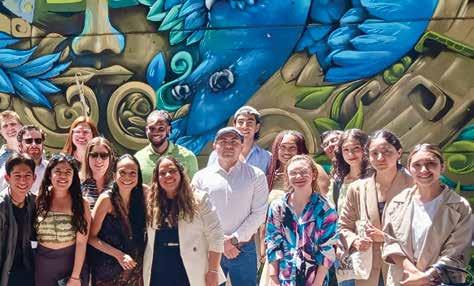
During the 2023–24 academic year, 670 students traveled to 29 locations on short-term programs and 25 students went on semester-long experiences.
In March 2023, two diferent groups of Schar School of Policy and Government students traveled to the southern border of the United States and Mexico to experience firsthand the policy debates on both sides of the immigration issue (see story on page 28).
Other trips included studying criminal justice in the United Kingdom and Ireland and a trip to the Balkans to look at reconciliation and post-conflict reconstruction.
In this program, first-year students can spend their fall semester at George Mason and their spring semester at one of 10 diferent locations in such countries as Costa Rica, Morocco, or Greece.
Global Gateway is specifically designed for firstyear students with a curriculum that allows students to satisfy many core requirements while taking advantage of local expertise. During the fall semester, students enroll in GEOC 108 Mason Transitions on the Fairfax Campus with fellow Global Gateway participants. In the spring, they travel with a cohort to another country. According to Jon May, GEO’s assistant director for Global Gateway, the program hosted 108 first-year students in 11 cohorts—two in Korea—during the spring 2024 semester.
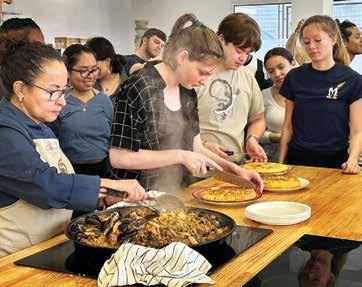
The university’s Global Internships Program allows undergraduate and graduate students to learn more about their chosen field of study and earn course credits with travel, virtual, and hybrid internships during winter break and the summer, fall, and spring semesters. Students are placed with companies that align with their field of study and spend the term absorbing knowledge and the country’s culture, whether in person or virtually.
“Our existing programs cover 35 diferent career fields with many crossovers,” says Kelly McNulty, experiential programs manager for GEO. “Students also have the opportunity to create their own internship by finding and applying to an internship and working with our team to set it up for course credit.”
In 2023–24, 103 students from George Mason interned across the globe with companies in 21 countries. The top travel destinations were Japan, Argentina, United Kingdom, Ireland, South Korea, India, Italy, Czech Republic, Morocco, Germany, and Australia.
George Mason works with dozens of partners worldwide and was able to send 89 students to more than 16 locations during the past academic year. While most students enrolled in semester-long programs, some enrolled in an international summer school.
One of the most popular study-abroad programs in this category is also George Mason’s most prestigious—the Oxford Semester, which launched in 1995. Each semester, a small group of high-achieving George Mason undergraduate and graduate students is selected to study in the United Kingdom as afiliated students at one of the 39 Oxford colleges.
SPIRIT EDITORIAL ASSISTANT KATARINA BENSON TRAVELED TO IRELAND WITH GEO. HEAR MORE ABOUT HER EXPERIENCE.
go.gmu.edu/ KatinIreland
Other partner schools include a number of universities in Australia, France, and Japan; Ghent University in Belgium; and Stellenbosch University in South Africa.
Outside GEO, there are additional opportunities to study abroad and even some academic programs that require it.
In the mid-1990s, George Mason’s Costello College of Business began requiring its graduate students to participate in a global residency. These residencies ofer firsthand experience on how business is conducted outside of the United States and highlight the importance of acknowledging the cultural diferences that exist between countries.
Global residencies are typically 10-day travel and business experiences where students are immersed in educational programming including company visits, discussions with industry leaders, meetings with executives, and cultural excursions. Faculty members play an integral leadership and mentoring role before, during, and after the residency.
For students, these trips are typically the most memorable class of their graduate program. Since the program’s inception, students have participated in more than 100 residencies around the globe. This summer, seven groups traveled to Dubai, Japan, Greece, South Africa, Brazil, Ireland, and France.
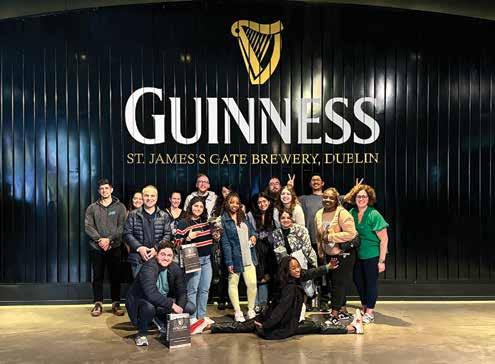
The Alan Cheuse International Writers Center, part of the College of Humanities and Social Sciences, ofers travel fellowships to graduate students in George Mason’s Creative Writing Program. These awards are designed to help students pursue an international writing project.
Since the program began in 2017, writing fellows have traveled to the Philippines to learn more about World War II Filipino resistance fighters and to Germany to research the life of 12th-century abbess Hildegard of Bingen, who was one of the few female authors of medieval Europe.
The Cheuse Center also hosts established and emerging international writers for a residency in Northern Virginia. These visiting writers continue their creative work, teach classes, and take part in events that highlight international literature. This residency seeks to strengthen the bonds between George Mason, Washington, D.C., and international literary communities. In 2023, the center hosted award-winning novelist Juan Gómez Bárcena from Madrid, Spain.

Following a thorough review of George Mason’s current international oferings, Blackwell recently identified a series of priorities in research, teaching, and engagement to expand the university’s global footprint. These priorities include initiatives such as exploring ways to support George Mason’s global research activities and collaborations, examining strategies to globalize the student learning experience, and conducting a comprehensive review of George Mason’s international partnerships.
George Mason’s revamped global engagement and long-standing emphasis on global learning signify a deep commitment to advancing the university’s internationalization eforts. The changes aim to elevate the student experience and provide valuable opportunities for faculty to engage globally while also including perspectives from alumni and partners who can assist in establishing new initiatives.
Looking forward, Blackwell says this new centralized direction will allow the university to “think creatively and boldly about ways to expand international capacity” and will “make George Mason a rich and diverse tapestry that will ensure the university is competitive around the world while meeting the community’s needs.”
Jennifer Anzaldi, Achim Loch, Ryley McGinnis, Colleen Kearney Rich, and Pam Shepherd contributed to this story.

Since 2014, INTO George Mason University has ofered classes to more than 3,000 international students from 70 countries, including China, Saudi Arabia, Thailand, Azerbaijan, and Turkey.
A collaboration between George Mason and INTO University Partnerships, INTO Mason ofers both undergraduate and graduate pathway programs for international students who want to study at George Mason.
“Our programs are designed to help students improve their English skills, understand the U.S. academic world, and provide them with wrap-around support so they succeed once they are fully immersed in their academic studies at George Mason,” says Todd Rose, executive director of INTO Mason.
Students who have gone through the INTO Mason programs are typically successful in their chosen studies, says Aimee Weinstein, DA Higher Education ’06, INTO Mason term assistant professor. For example, 82 percent of students who start in an INTO Mason graduate pathway program go on to graduate with a master’s degree.
“At INTO Mason, everyone—from professors to enrollment specialists—is really focused on student success,” says Weinstein. “That translates into students who feel confident that they can succeed and are encouraged every step of the way.”
—Anna Stolley Persky, MFA ’24
George Mason community members from around the world came together for a week of events to recognize the Songdo campus’s 10th anniversary.

In March 2014, George Mason University took a nearly 7,000-mile step in its commitment to becoming a university for the world when it opened its campus in Songdo, Korea. This June, the university took a moment to celebrate a successful 10 years with a week of festivities.
What began with 34 students as part of the Incheon Global Campus, a national project established by the Korean government and Incheon Metropolitan City to innovate the Korean education system and nurture the next generation of global leaders, now boasts more than 1,000 students who represent 18 countries.
The campus is a key source of educational, research, and internship opportunities for George Mason students in both the United States and Korea. As then-provost Peter Stearns, who played a pivotal role in establishing Mason Korea, said in 2014, “Preparing students for their future lives and careers has to involve a serious global component because they’re living in a world where global interactions are increasingly going to be part of the fabric of their lives.”
Mason Korea ofers six undergraduate and two graduate degrees and encourages Korea-based students to experience one year of their college studies in the United States. About 100 students travel to Virginia each semester.
Virginia-based administrators, faculty, staf, and students traveled to South Korea to take part in the celebration and begin planning for the next decade. They even brought along their own band.
The group traveling to Mason Korea from Virginia included music professor and director of the Green Machine Ensembles Michael “Doc Nix” Nickens and a small group from the Green Machine.
The Mason Korea anniversary opening event featured a first-of-its-kind collaboration between the Green Machine pep band and Mason Korea's student band, Crescent. The bands’ synergy filled the banquet hall with a mix of English and Korean pop music hits.
“It was really interesting interacting with musicians from Mason Korea,” says Green Machine drummer Dylan Storie. “It goes to show how music is a universal language that we all share regardless of who we are, where we come from.”
A landmark meeting between George Mason president Gregory Washington and Incheon mayor Jeong-bok Yoo helped mark a decade of successful collaboration and solidified a commitment to the future of Mason Korea.
Washington expressed his gratitude for Incheon’s unwavering support over the past decade. Discussions focused on Mason Korea’s future, including expanding the campus and establishing new research institutes.
“This meeting with Mayor Yoo provided a valuable opportunity to reflect on Mason Korea’s remarkable journey,” says Washington. “We look forward to sharing our vision for the future and further strengthening our partnership with Incheon City for mutual growth.”
Yoo echoed the sentiment, extending congratulations on Mason Korea’s anniversary and acknowledging its contributions to the Incheon Global Campus (IGC). He specifically highlighted the university’s role in cultivating global talent, citing the significant increase in IGC student enrollment this year.
Yoo also commended Mason Korea’s commitment to the region through initiatives like the new master of laws degree program, which fosters local talent development and competitiveness.
“We are grateful for Mason Korea’s dedication to raising the profile of the IGC,” says Yoo. “Their success aligns perfectly with our vision for the Incheon Global Campus. We look forward to their continued contributions.”
George Mason and the Incheon Free Economic Zone Authority (IFEZA) also solidified their partnership with a memorandum of understanding (MOU). Washington and IFEZA commissioner Wonsok Yun led the signing ceremony, paving the way for expanded collaboration on industry–academia projects between Mason Korea, located in the Songdo International Business District of the Incheon free economic zone, and the IFEZA.
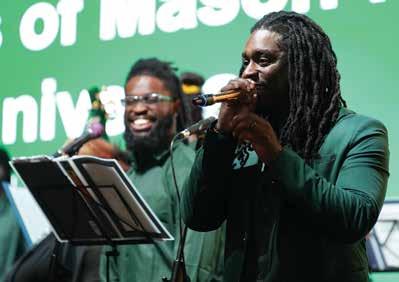
Right, President Gregory Washington met with Incheon mayor
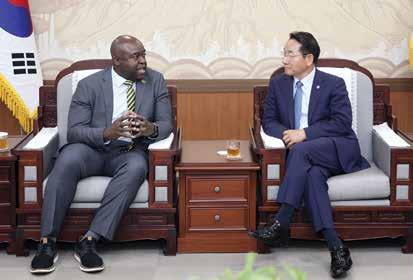
Almost 100 students a year travel from Mason Korea to spend time taking classes on George Mason’s Virginia campuses. Here are some alumni who have chosen to kick of their careers in the United States.
Nara Lee, BA Global Afairs ’20, is the program manager at the Korean Community Service Center of Greater Washington for the Centers for Disease Con trol’s national Racial and Ethnic Approaches to Community Health program. While at Mason Korea, Lee was an active teaching and research assistant in conflict analysis and resolution, compu tational and data sciences, and climate change programming, all while being an avid student lead er. She earned a master’s degree in global health economy from Johns Hopkins’ Bloomberg School of Public Health in 2023.
Haseung (Madeline) Joung, BA Global Afairs ’20, is the manager for public relations and social media at the Korean Cultural Center in Washington, D.C. Joung started her career in journalism as a reporting intern for Voice of America in Washington, D.C., at the height of the pandemic. Her passion for media led her to be the public relations oficer and staf writer for the Korean Culture and Information Service in Seoul, South Korea, the government institution that brought her back to her current role at one of the 32 cultural centers worldwide.
Eun Seok (Peter) Jang, BS Accounting ’22, is a tax consul tant for business tax services at Deloitte in Tysons Corner, Virginia.
Da Jung (Michelle) Jung, BA Conflict Analysis and Resolution ’20, is a policy research analyst for the Political Afairs Division of the Republic of Korea Embassy in Washington, D.C. Jung interned at Fairfax County’s workplace conflict awareness program and George Mason’s Early Identifica tion Program as an undergradu ate and worked for several inter national organizations in South Korea before coming back to the Washington, D.C., metropolitan area. In 2023, she graduated from Johns Hopkins’ School of Ad vanced International Studies with an MA in international relations.
Seulki (Michaela) Kim, BS Information Technology ’20, is an associate for forensic services at Charles River Associates in Washington, D.C. As a student, Kim worked with various ofices on the Fairfax Campus, including in the Ofice of University Brand ing, INTO Mason, the Department of Computer Science, and the Facilities Help Desk. Kim expects to graduate this winter with a master’s degree in digital foren sics from George Mason.
Saeyeon Kwon, BA Global Afairs ’22, is an incoming environmental, social, and governance (ESG) intern for the stewardship team at Sands Capital in Arlington, Virginia, following several intern ships in ESG impact investment. Kwon recently graduated from Georgetown University with a master’s degree in environment and sustainability management.
The agreement focuses on fostering joint educational and research initiatives in critical areas like bioengineering, biomanufacturing, cybersecurity, artificial intelligence, information and communication technologies, and start-up incubation. This collaboration has the potential to create exciting new opportunities for students and researchers in both Korea and the United States.
“This MOU marks a significant step forward for Mason Korea,” says Washington. “By expanding our cooperation with IFEZA, we aim to equip students with valuable educational experiences and further support the development of the Incheon region.”
“We are thrilled to solidify our existing partnership with Mason Korea and extend it to encompass George Mason’s U.S. campus,” says Yun. “This MOU has the potential to propel both George Mason University and the Incheon region toward a brighter future.”
As part of the celebration, Mason Korea hosted a gala at the Fairmont Ambassador Seoul, during which Washington and Mason Korea dean Robert Matz reflected on Mason Korea’s history and outlined plans for the future. A video message from Stearns, now provost emeritus, was part of the program.
“A lot of people have put in tremendous amounts of time and constructive energy, so [Mason Korea is] a real achievement that all sorts of people have contributed to, including the students,” says Stearns, who was provost from 2000 to 2015. “It’s just really good to see the campus succeeding to this extent, and it’s a source of real pleasure to me that we’ve done so well.”
Mason Korea supporters who made this milestone possible—including deans, senior leadership, current and former leadership, and advisory board members—were also recognized.
A highlight of the evening was a generous $60,000 pledge by Mason Korea advisory board member Sam Machour, bringing his total commitment to student scholarships since 2022 to $120,000. Goeun Baek, a scholarship recipient, delivered an emotional speech expressing gratitude to Machour for his transformative impact on her academic journey.

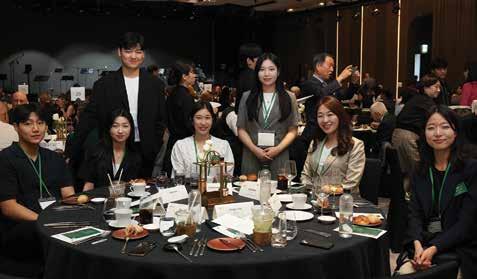
A Commencement ceremony (left) and a anniversary gala (right) rounded out the CLASS OF 2024
The week of festivities culminated with Mason Korea faculty, staf, students, and proud families gathering to celebrate the achievements of the Class of 2024. Guests also had the opportunity to witness two Mason Korea firsts as Vice Provost Janette Muir hooded its first doctoral graduate, Eric W. Ross, PhD Cultural Studies ’24, and Washington recognized its first Presidential Faculty Excellence Award recipient Eunmee Lee.
Ross and Lee are both Mason Korea faculty members. Ross teaches in the School of Integrative Studies. Lee joined Mason as a faculty member for INTO Mason in 2015. In 2016, she transferred to the Mason Korea faculty in Incheon, where she is currently an instructional associate professor and teaches English for academic purposes. Lee is also the founder and director of Mason Korea’s Academic Resource Center.
Graduating senior Se Na Julsdorf, BA Conflict Analysis and Resolution ’24, delivered a moving speech on behalf of the student body, and George Mason alum Gunsu Kim, BS Tourism and Events Management ’12, CEO of ALLWorks, had the honor of pinning the newest graduates.
In his congratulatory remarks, Washington highlighted the campus’s unique role, stating, “Mason Korea exemplifies how George Mason is ‘All Together Diferent’ and how our university ofers students the experiences necessary to chart their own path, but at the same time prepares them for success in the global economy.”
Jae Hee Suh and Seihoon Lee contributed to this article.
week of festivities in Songdo.
1,000 STUDENTS
199 CLASSES OFFERED IN SPRING 2024
(including multiple sections of a course)
49 MASON KOREA FACULTY MEMBERS
18 COUNTRIES
6 BACHELOR DEGREE PROGRAMS
Conflict analysis and resolution, economics, computer game design, computational and data sciences, global affairs, and business
8 U.S.-BASED FACULTY MEMBERS TEACHING ONLINE
442 GRADUATES 2 GRADUATE DEGREE PROGRAMS
Computational sciences and law
13 HOURS AHEAD OF THE FAIRFAX CAMPUS
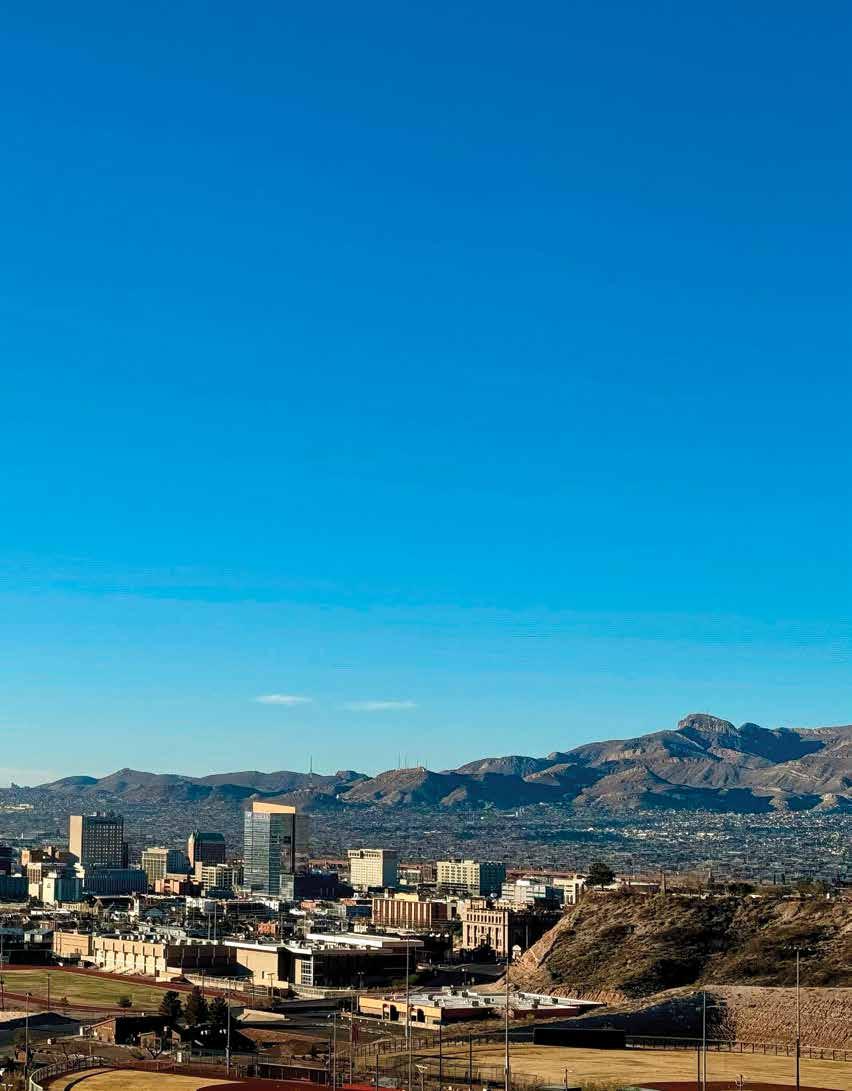
The Schar School of Policy and Government has been taking students to the U.S.–Mexico border for an in-depth look at the challenges associated with it.
This March, during spring break, two groups of George Mason University students headed to the southern border.
Michal McElwain Malur, BA International Studies ’96, MA ’97, director of external programs at the Schar School of Policy and Government, helped plan the trips in coordination with the university’s Global Education Ofice.
Malur says Schar School students have been taking study-abroad trips to Mexico annually for the past 20 years. The Mexico study-abroad experience is one of about five trips a year that Malur plans for the school.
“Since the inception of its study-abroad program, the Schar School has prioritized providing students with opportunities to explore consequential policy problems facing the United States today,” says Malur, who assembled the itinerary and has helped lead a trip to the border for the past two years.
Each spring, a diferent professor teaches the three-credit course POGO 550 Topics in Policy and Government, which includes a weeklong trip to the border, and focuses on related current events such as trade, immigration, and security. This semester Schar School professor Guadalupe Correa-Cabrera, a foremost expert on border and immigration policy, taught the class.
The other border trip was part of a one-credit course ofered to members of the Schar School’s International Relations Policy Task Force (IRTF) to witness the causes and consequences of competing narratives surrounding border dynamics. Led by Schar School professor Eric McGlinchey, the task force invites upper-level students to engage with pressing global challenges by pursuing a research topic of interest, networking with subject area experts, and working collaboratively to propose policy solutions.
“The fact that the trips were both at the border is a testament to the Schar School’s commitment of ofering our students the opportunity to experience firsthand policy debates and see the consequences of the most important policies of the time,” says Malur.
Following President Biden’s highly publicized visit to Brownsville, Texas, graduate students in POGO 550 traveled to the U.S.–Mexico border town.
“We spent one whole day at the border, specifically at the border wall, and we spoke at length with a local editor about border security,” says CorreaCabrera. “It was important to see this issue through the eyes of someone who covers it for newspapers for a population that relies on accurate information.”
Along the way, the group met with top industry and government leaders on both sides of the border, with whom they discussed the ongoing issues at the top of international headlines.
“Putting a face to the border was fascinating,” says Davis Kaderli, who is working on a master of public policy. “It is much more complex than the majority of Americans understand. What I actually saw isn’t what the mass media often portrays.”
For instance, while in Brownsville, the students heard harrowing stories of inadequate services provided to Americans in need along the border.
In nearby Boca Chica, during a visit to the SpaceX complex, students met with residents in government partnerships and discussed how SpaceX impacts their community.
George Mason students on the Aztec Cave Trail near El Paso.
Students then visited Mexico City and the National Autonomous University of Mexico, where they had the opportunity to engage in conversations with decision-makers and attend lectures.
“Mexico was having elections in June this year,” says Correa-Cabrera. “The United States is having them in November. We put these elections in context for the students.”
Upon arriving in Mexico City, the students received a briefing from Miguel Siliceo, the senior economic advisor to Mexico’s President Andrés Manuel López Obrador.
The students were oficially welcomed during a federal senate session followed by a meeting with Mexico’s vice president of the senate, senator Sergio Perez Flores. The students say they gained insights from Mexican oficials and policymakers on mutual challenges, as well as new avenues for cooperation and engagement.
“We had ridiculous access on this [trip], from [Obrador’s] senior economic advisor to a legislative briefing at the Mexican federal senate by the vice president of the senate,” says Chris Williams, who is working on a master’s degree in global commerce and policy.
Students also met with senior diplomats at the U.S. Embassy in Mexico and received a briefing on the challenges in current U.S.–Mexico relations. “[That] was my favorite session,” says Anduela Johnson, who is working on a master’s degree in international security. “It was interesting to hear how they are managing security issues and balancing economic implications. They see the relationship with the United States and our shared border diferently.”
“I really valued the range of perspectives we heard,” says government and international politics major Gabe Dole.
This was the second year that the task force took students to El Paso and Juárez, says McGlinchey, who also led the trip. This year’s theme focused on competing narratives about migration at the border.
“This was an ideal location to learn, frsthand, how government action and inaction on questions of migration directly afect communities on both sides of the U.S.-Mexico border,” says McGlinchey.
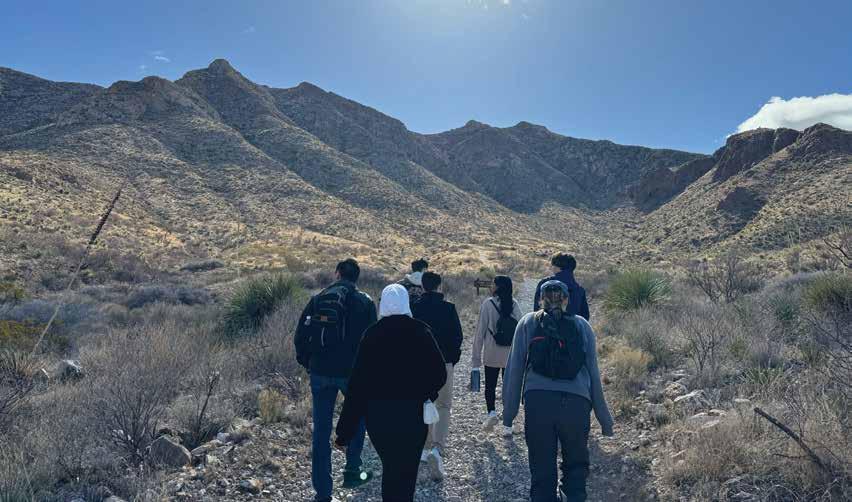
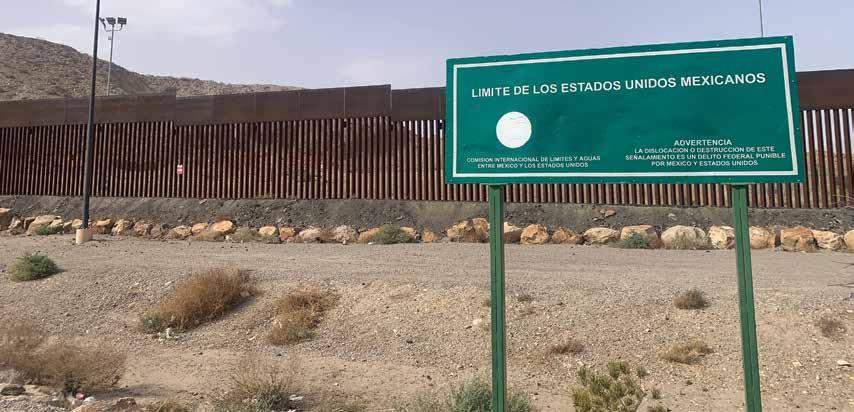
Abara, a nonprofit organization dedicated to fostering peace through educational programs around immigration and border realities, hosted the IRTF students. Working with the nonprofit and engaging with local community members and activists helped the George Mason students cultivate a deeper comprehension of border dynamics and the individuals afected.
Abara provided the students with volunteer experiences in some of the 32 shelters they work with both in El Paso, Texas, and Juárez, Mexico. The objective of these experiences was to allow students to engage with those directly impacted by the border issues, particularly migrants, through community service activities, such as assisting in the kitchen and garden.
“Being able to directly interact with migrants facing challenges at the border and putting faces to the topics often discussed in political discourse was incredible and provided me with an experience I will never forget,” says government and international politics major Kaylee Fernandez.
As an intern on Capitol Hill for U.S. Representative Gerry Connolly, Fernandez says the trip will continue to shape her perspective for years to come. “This experience has forever changed how I will approach drafting memos and understanding legislation related to immigration.”
Beyond volunteering in shelters, students had the opportunity to explore historical and political landmarks, engage with governmental and
nongovernmental representatives, and connect with faculty and students from institutions in Juárez. One of the speakers was George Mason alum Sophia Wozniak, BA History; Government and International Politics ’19, who works as a project and data evaluator at the Emergence Health Network, a local mental health authority for the El Paso community.
Wozniak had taken the spring break border trip during her time at George Mason and says it influenced her career choices. “The Schar School was such a huge catalyst in the dominos of me ending up where I am now,” she says. “If it were not for the spring break trip to Mexico, I would have never discovered my deep interest in immigration issues and policy work”
Public administration major William Barker, who was on their second trip to the border, had a similar experience “The trip encouraged openness, dialogue, and connection, and the scenic overlook of El Paso and Juárez served as a poignant reminder of the diverse narratives and shared humanity that transcend borders,”they say.
“[ This trip] reafrmed my passion for international relations and helped me confrm what I want to do after graduation.”
Mariem El Gazzah, Aidan Jacobs, and Colleen Kearney Rich contributed to this article.
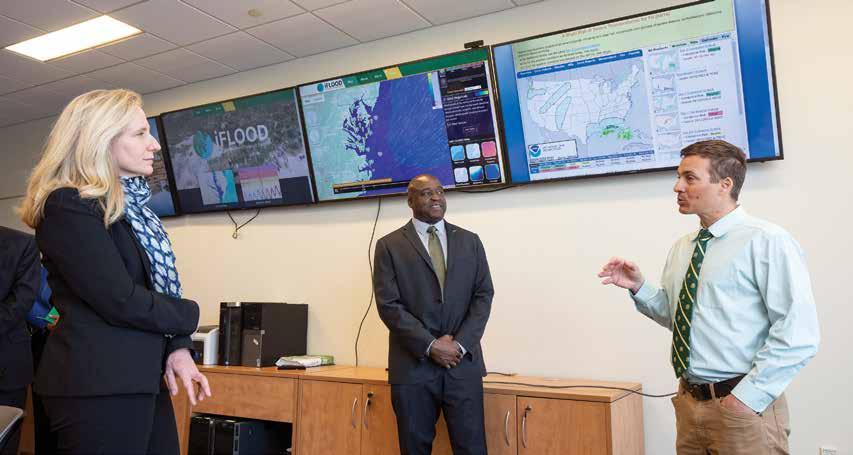
Representative Abigail Spanberger tours Celso Ferreira’s Flood Hazards Lab at the Potomac Science Center with President Gregory Washington.
GEORGE MASON UNIVERSITY SCIENTISTS AND PARTNERS are leveraging their climate expertise and the university’s resources to support the creation of climate-resilient communities across Virginia, thanks to a $6 million grant from the National Science Foundation (NSF).
The funding from the NSF’s Accelerating Research Translation (ART) program allows George Mason to expand its capacity for translating research into real-world applications that help communities— especially in the commonwealth’s underserved regions—by coproducing science-based solutions that help increase their resilience to climate change.
During the four-year agreement, George Mason faculty and their nonprofit partner, the Center for Climate Strategies, will work with local municipal governments and community partners on two initial projects that focus on solutions to mitigate flood hazards and reduce the impacts of urban heat on frontline communities. Faculty members also have the opportunity to propose additional projects.
George Mason was one of 18 schools awarded NSF ART funding. The NSF’s overall investment of more than $100 million enables academic institutions to accelerate the pace and scale of translational research that will grow the nation’s economy.
“We’re trying to understand what it is that [local communities] need from a scientific, technical, or research point of view through the lens of what is it that a university can provide,” says Leah Nichols, the project’s coprincipal investigator (co-PI) and executive director of George Mason’s Institute for a Sustainable Earth.
George Mason’s ART program leverages a model already created by the Virginia Climate Center, which was initially established by a $2 million community project grant sponsored by U.S. Representative Gerry Connolly (D-VA) and includes targeted outreach to community leaders to build collaborative relationships that help meet community needs.
“One very troubling aspect of the efects of climate change is that it has the biggest impact on underserved people and communities that are least able to address the issue,” says co-PI James Kinter, director of the Virginia Climate Center. “George Mason, being the largest public university in Virginia, owes it to the residents of the commonwealth to understand the risks we face and create innovative solutions to increase community resilience.”
—John Hollis
A GEORGE MASON UNIVERSITY SCIENTIST AND TEAM OF RESEARCHERS developed a new camera system that allows ecologists and filmmakers to produce videos that accurately replicate the colors that diferent animals see in natural settings.
Authors of the study, published in PLOS Biology, include Daniel Hanley, an assistant professor in George Mason’s Department of Biology; Vera Vasas at the University of Sussex; and colleagues from the Hanley Color Lab at George Mason.
“We’ve long been fascinated by how animals see the world,” says Hanley, who is also a National Geographic Explorer.
Diferent animals perceive the world diferently because of the capabilities of the photoreceptors in their eyes. For example, bees and some birds can see ultraviolet (UV) light, which is outside the range of human perception. Reconstructing the colors that animals actually see can help scientists better understand how animals communicate and navigate the world around them.
False color images give us a glimpse into this dynamic world, but traditional methods, such as spectrophotometry, are often time consuming, require specific lighting conditions, and cannot capture moving images.
To address these limitations, researchers developed a novel camera and software system that captures animal-view videos of moving objects under natural lighting conditions. The camera simultaneously records video in four channels: blue, green, red, and UV.
This data can be processed into “perceptual units” to produce an accurate video of how animals perceive those colors, based on existing knowledge of the photoreceptors in their eyes. The team tested the system against a traditional method that uses spectrophotometry and found that the new system predicted perceived colors with an accuracy of more than 92 percent.
“We were very surprised by how accurate the method was for quantifying colors on moving targets,” says Hanley.
This novel camera system will open new avenues of research for scientists and allow filmmakers to produce dynamic, accurate depictions of how animals see the world around them, the authors say. This project demonstrates how George Mason is undertaking research in bold ways. The system is built from commercially available cameras, housed in a modular, 3D-printed casing, and the software is open source, which will allow other researchers to use and build on the technology in the future.
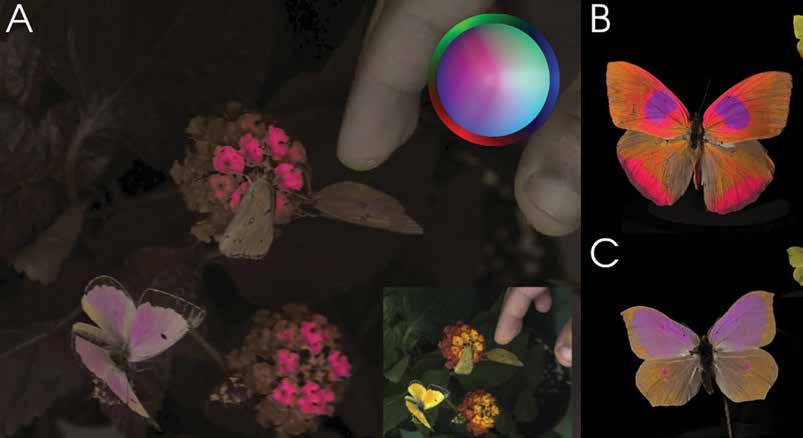
SEE GEORGE MASON INGENUIT Y AND THE COFFEEBOTS IN ACTION. go.gmu.edu/ CofeeBots
SOMETIMES THE MOST ELEGANT SOLUTIONS are the simplest, like using one waste product to eliminate another. By combining spent cofee grounds with iron oxide (rust), George Mason engineers have created “CofeeBots” that can bind to diferent pollutants in seawater before being removed with magnets.
George Mason postdoctoral research fellow Amit Kumar Singh originally proposed the project as a way for Thomas Jeferson High School student Tarini Basireddy to gain hands-on experience in professor Jef Moran’s laboratory without having to interact with dangerous chemicals. Moran’s lab, part of the College of Engineering and Computing, focuses on developing self-propelled microparticles for medical and environmental applications.
“Tarini and Amit developed a simple strategy to coat spent cofee grounds, which I brought from home after brewing my morning cofee, with iron oxide nanoparticles,” says Moran.
Cofee grounds have an irregular, porous surface to which pollutants can bind, even with the much smaller iron oxide nanoparticles attached. Since iron oxide is magnetic, a simple handheld magnet can drive CofeeBots through polluted water and remove them.
While using cofee grounds to clean up oil spills is not entirely new, this George Mason team took a different approach and is the frst to show that mobile CofeeBots outperform stationary ones since moving particles encounter more pollutant molecules.
Making the cofee grounds magnetic has another beneft: Once the CofeeBots are recovered, they can be reused several times before losing their efcacy.
The team tested their CofeeBots at removing three types of pollutants from seawater: methylene blue, oil, and microplastics.
The team found that the particles can be an efective solution for cleaning methylene blue, a carcinogenic dye commonly used in textile production, especially when the CofeeBots are frst loaded with ascorbic acid, which helps break down the dye and render it nontoxic.
Basireddy notes the potential simplicity of using CofeeBots to clean methylene blue pollution because several of the countries that are big textile producers also happen to be big cofee producers.
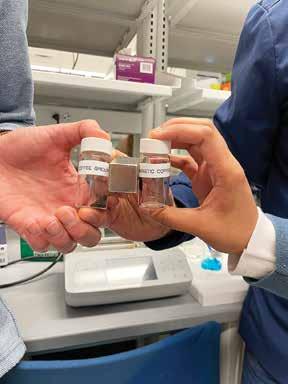
BY
After establishing that CofeeBots could likewise remove oil from seawater, the team moved on to perhaps the most exciting pollutant tested: microplastics. At the forefront of the news in recent years, microplastics, like oil, cling to cofee grounds because they are hydrophobic.
“One reason why microplastics are such a tricky environmental problem is that they’re so small that it is difcult to locate them,” says Moran. “By driving the CofeeBots through water, the hydrophobic interactions cause the microplastic particles to accumulate on the surface of the cofee grounds.”
Singh notes that, while other more expensive techniques exist for remediating oil spills and removing chemical pollutants from water, developing a technique to make microplastic removal more efcient is an exciting new development.
In addition to publishing their fndings in the journal Nanoscale, the team has applied for a patent to protect the technology and are excited to determine the full capabilities of CofeeBots.
—Teresa M. Donnellan
OVER THE PAST DECADE, nanotechnology has taken the world by storm, transforming industries from health care to electronics. As a result, nanofabrication, which is the manufacturing of nanoscale structures, is more important than ever. Proper fabrication requires sophisticated equipment and a skilled workforce, and George Mason University stands ready to respond to the rising demand by opening the Nanofabrication Facility (NFF) on its Science and Technology Campus to conduct state-of-the-art research and help train the next generation of innovators.
“The NFF is the only clean room facility and resource for partners in Northern Virginia and ofers hands-on nanofabrication workforce training in groundbreaking research and business development activities that will accelerate growth of high-tech companies,” says Andre Marshall, vice president of research, innovation, and economic impact at George Mason. “George Mason is committed to providing many opportunities for students to participate in experiential learning and is ready to compete on a global scale.”
George Mason engineering professor Ethan Ahn sees the new facility as a perfect opportunity for students to receive hands-on experience in a nanofabrication lab. Ahn taught the university’s first-ever nanoelectronics fundamentals course during the spring 2024 semester, where students created electronic devices in the NFF class 1000 clean room.
“Hands-on experience in this field is invaluable, especially because students can become familiarized with the equipment that they may encounter in their future careers,” says Ahn, an associate professor in the Department of Electrical and Computer Engineering.
George Mason also launched the Nano-IMAGINE program with the help of a $3.75 million grant from GO Virginia, a state-funded initiative administered by the Virginia Department of Housing and Community Development. Through Nano-IMAGINE, George Mason plans to provide two workforce-readiness opportunities in 2024: Nanocamp for high school students and Nano Boot Camp for those who would like to gain entry-level skills in an in-demand field.
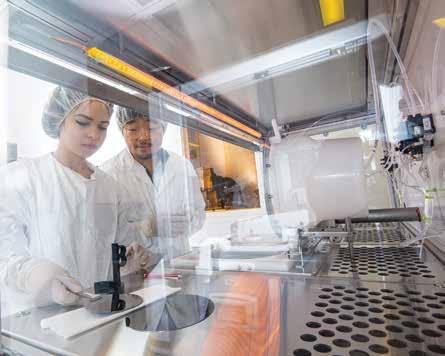
George Mason is a member of the Virginia Alliance for Semiconductor Technology (VAST), which bolsters workforce access and advocates for the growth of semiconductors. VAST is a collaborative network of the semiconductor, microelectronics, and nanotechnology industries and the Virginia colleges and universities providing access to state-of-the-art research facilities and training programs.
“By investing in top faculty, new programs and facilities, and partnerships, George Mason is connecting learning and market advancement to drive innovation for everyone across the state,” says Marshall. “We are leading regional collaborations across sectors to bring a better tomorrow.”
—Katie Maney
Professor Ethan Ahn works with student Virginia Nardelli in the Nanofabrication Facility on the Science and Technology Campus.
In 2023, George Mason University joined the Alliance of Art Research Universities as an institutional member, positioning the university among other Tier 1 research institutions to support an emerging research culture in the arts.
Recently published works by George
Mason faculty



International Handbook of Engineering Education Research
Aditya Johri, professor, College of Engineering and Computing (Ed.)
Routledge, May 2023
Winner of the Outstanding Research Publication Award at the American Educational Research Association conference, this handbook brings together 100 expert contributors from more than 20 countries to address the state of the art in engineering education. The handbook covers a wide range of topics including engineering ethics, curriculum design, theoretical perspectives, research methods, and the use of technology and computing.
Supporting Nonviolent Action and Movements: A Guide for International Actors
Shaazka Beyerle, senior fellow, Terrorism, Transnational Crime and Corruption Center
United States Institute of Peace, October 2023
With detailed research and extensive interviews, Beyerle examines how external actors can support anti-corruption, transparency, accountability, and good governance movements and campaigns, and provides invaluable strategic questions, considerations, and practices to better inform donor policy decisions and practices to support peaceful citizen-driven change.
Pharmacology for Nurses: A Pathophysiologic Approach, 7th Edition
Shanti Chang, associate professor, School of Nursing, with Michael P. Adams and Norman Holland
Pearson, October 2023
Pharmacology for Nurses is a textbook designed to equip nursing students with a deep understanding of pharmacological principles and their application in patient care. It covers essential topics such as drug classifcations, mechanisms of action, and therapeutic uses, providing a solid foundation for safe and efective medication administration.
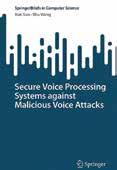


Kun Sun, professor, and Shu Wang, PhD student, College of Engineering and Computing
Springer, October 2023
This book provides readers with a basic understanding regarding threats to voice processing systems, state-of-the-art defense methods, and current research on securing voice processing systems. It also introduces three mechanisms to secure voice processing systems against malicious voice attacks under diferent scenarios by utilizing time-domain signal waves, frequencydomain spectrum features, and acoustic physical attributes.
Prenatal and Postnatal Care: A PersonCentered Approach, 3rd Edition
Karen Trister Grace, assistant professor, School of Nursing, with Cindy L. Farley, Noelene K. Jefers, and Tanya Tringali Wiley, November 2023
Prenatal and Postnatal Care takes a holistic, person-centered approach to prenatal and postnatal care. Emphasizing the pregnant person and their unique needs, this book presents prenatal and postnatal care as foundational care for a healthy start to family life and provides practitioners with the knowledge and skills to make a positive diference to the people they serve.
State of Silence: The Espionage Act and the Rise of America’s Secrecy Regime
Sam Lebovic, professor, Department of History and Art History
Basic Books, November 2023
This book covers the legacy of the 1917 Espionage Act, which was initially used to punish critics of World War I. Yet as Americans began to balk at the act’s restrictions the government turned its focus toward keeping its secrets under wraps. The resulting system for classifying information is absurdly cautious, staggeringly costly, and shrouded in secrecy, preventing ordinary Americans from learning what their country is doing in their name, both at home and abroad.
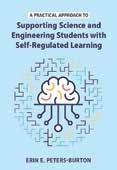


Erin E. Peters-Burton, Donna R. and David E. Sterling Endowed Professor, College of Education and Human Development
Cambridge University Press, November 2023
Science and engineering practices tend to be more difcult to teach and monitor for student progress than content knowledge because practices are skill based. This book presents tangible ways to design learning environments that involve student goal setting, monitoring, and reflection on their performance of science and engineering practices. It models ways teachers can support efective learning behaviors and monitor student progress.
Kun Sun, professor, College of Engineering and Computing, with Clif Wang and S.S. Iyengar (Eds.)
Springer, December 2023
As artifcial intelligence (AI) becomes more integrated into various aspects of our lives, the need for reliable and trustworthy AI systems becomes increasingly important. The authors discuss how AI-powered cyber systems are designed to protect against cyber threats and ensure the security and reliability of digital systems using AI technologies.
By the Numbers: Numeracy, Religion, and the Quantitative Transformation of Early Modern
Jessica Otis, assistant professor, Department of History and Art History
Oxford University Press, January 2024
This book explores how, during the 16th and 17th centuries, English numerical practices underwent a complex transformation. Rising literacy rates and the increasing availability of printed books revolutionized modes of arithmetical practice and education. Ordinary English people began to use numbers and quantifcation to explain abstract phenomena.

In 2013, Schar School of Policy and Government professor
Guadalupe Correa-Cabrera took the frst trip in what would be a decade-long project to explore the U.S.–Mexico border from end to end. The result—Frontera: A Journey Across the U.S.–Mexico Border (TCU Press, March 2024), which she cowrote with journalist Sergio Chapa—takes a look at the people and the combined cultures in these border towns.
What inspired you to write this book?
We didn’t start traveling because we wanted to write the book. This was a personal project of knowing and understanding the whole U.S.–Mexico border on both sides. I was born and raised in Mexico; Sergio is a Mexican American from Texas. We met when I was a professor at the University of Texas in Brownsville and [Chapa] was the director of one of the local TV stations. We were basically interested in the same research, and after two meetings, he expressed his desire to know the border. I said, yes, this is my dream too. We didn’t really know each other when we decided to go on that frst trip together. Now he is my best friend. I call him my brother.
Was there anything that surprised you?
There were always things that surprised us, good and bad. Each segment of the border is just so diferent from the other segments. We also had many of what we called “magic moments,” including encounters with “border angels.” In one case, we lost a tire in a huge pothole in a dangerous area, and we did not have a spare. And no cell service. Then this man showed up in an old car and happened to have a spare tire. The tire he had didn’t quite ft, but he made it work and refused to take any money for it. He was our “border angel.”
What are you working on now?
I have a Fulbright to do research at El Colegio de la Frontera Norte in Tijuana. I have a contract for a book on immigration and human smuggling networks. This is a project I’ve been working on for eight years. I will fnish my feld research and my book.
—Colleen Kearney Rich, MFA ’95
During the spring semester 2024, Correa-Cabrera led a study-abroad trip to the U.S.–Mexico border. Find out more on page 28.
Mason alumni
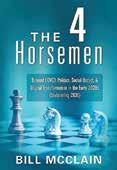
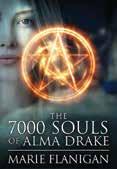
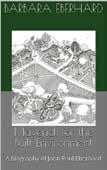
The 4 Horsemen: Beyond COVID, Politics, Social Unrest, and Digital Transformation in the Early 2020s (Envisioning 2030)
Bill McClain, MBA ’81
The four horsemen of pandemics, foul politics, social unrest, and the arriving digital transformation make strategic planning more challenging than ever before. The goal of this book (Outskirts Press, 2021) is to understand these four factors and their interrelationships and begin to envision the future.
McClain is a businessman, futurist, and author focusing on helping small businesses envision the future. He lives in coastal Connecticut with his wife and enjoys the beach, kayaking, and biking. This is his third book.
The 7,000 Souls of Alma Drake
Marie Flanigan, BA English ’94, MA Telecommunications ‘98
This novel (Red Adept Publishing, January 2023) follows Alma Drake, a college student who gets turned into a succubus. She has to drop out of college to keep from accidentally killing her classmates. Now Alma’s up to her eyeballs in soul debt, and shadowy fgures have begun stalking her.
A licensed private investigator, Flanigan has been a disc jockey, a web developer, and a children’s librarian over the years. She lives outside of Washington, D.C., with her husband and three dogs. This is her third novel.
Maverick for the Built Environment: A Biography of John Paul Eberhard
Barbara Eberhard, EMBA ’05
Maverick for the Built Environment
(Independently published, June 2023) is a biography of John Paul Eberhard, a trained architect who believed that architecture should not ignore the human factor and that new ways of thinking were needed to improve the built environment.
Eberhard has published 12 novels, including fve fctional biographies and seven fantasy novels.

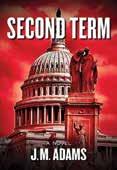

Alyse Knorr, MFA Creative Writing ‘12
At the intersection of eco-poetics and queer family-building, Ardor (Gasher Press, September 2023) moves across the political and natural landscapes of Alaska, Colorado, and the American Deep South. The poems meditate on love and motherhood in the context of environmental crisis.
Knorr is an associate professor of English at Regis University, coeditor of Switchback Books, and coproducer of the Sweetbitter podcast. Her book, Mega-City Redux, won the 2016 Green Mountains Review Poetry Prize. She is also the author of two poetry collections, two nonfction books, and four poetry chapbooks.
John M. Adams, BA American Studies ’89
In this debut novel (Oceanview Publishing, October 2023), a lame duck president’s desperate power grab threatens democracy in the United States. Can former intelligence operative and single mother Cora Walker prevent catastrophe?
Adams is an Emmy-nominated journalist with more than 15 years of on-air television journalism experience reporting for CBS, ABC, and NBC news afliates across the United States and abroad. He lives in northern New Jersey with his wife, two daughters, and a pair of Cavachons.
Cynthia Marie Hofman, BA Creative Writing ’98, MFA Creative Writing ’03
This collection (Persea Books, February 2024) forms a memoir chronicling a woman’s childhood onset and adult journey through obsessive compulsive disorder, which impacts her relationship to motherhood, religion, and the larger world.
Hofman is a former Diane Middlebrook Poetry Fellow at the Wisconsin Institute for Creative Writing, Director’s Guest at the Civitella Ranieri Foundation, and recipient of an Artist Fellowship from the Wisconsin Arts Board. This is her fourth book.
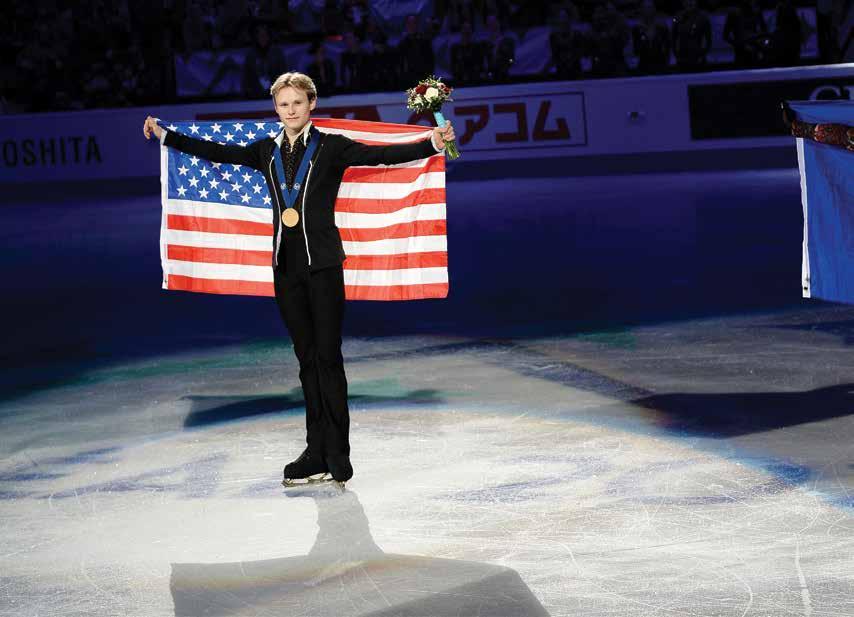
YEAR: First Year Student
MAJOR: Undecided
HOMETOWN: Vienna, Virginia
While an injury slowed him down in the lead up to the 2024 World Figure Skating Championships in Montreal, George Mason’s Ilia Malinin wasn’t to be deterred. With a world recordsetting score of 227.79 in the free program, the 19-year-old left no doubt about who will be the likely favorite in the upcoming 2026 Winter Olympic Games in Italy.
“I was surprised at how well I skated,” says Malinin. “It was a lot of pressure because I knew it could be the best skate of my life or it could go terribly wrong.”
QUAD KING: Considered a rising star in the sport, Malinin successfully executed a record six quad jumps at the championships, including his signature quadruple axel jump that ranks as the sport’s most dificult in competition. All quad jumps have four revolutions, except for the quad axel, which has four and a half revolutions. Malinin is the only person to have ever successfully performed a quad axel in competition, and he has been doing it since 2022.
HIS RIGOROUS SCHEDULE: Being the best in the world means practicing anywhere from four to six hours daily, six times per week, under the watchful eye of his parents and coaches, Tatiana Malinina and Roman Skorniakov, who are former Olympic skaters
from Uzbekistan. His grandfather Valery Malinin is a former Soviet Olympic skater currently coaching in Russia. “When I first started skating [at age 7], it was more for fun,” he says. “Around 13, I realized that I could skate for more than just fun.”
ON CHOOSING GEORGE MASON: Mindful of a career after his skating days are over, Malinin says he enrolled at George Mason because it ofers a great education near his home and his training rink in Reston. He has a number of close friends from George C. Marshall High School who are also now George Mason students.
JUGGLING ACADEMICS AND TRAINING: With all the training and travel, it is imperative Malinin make the most of every minute each day, so he often brings his laptop along to keep up with coursework during the semester. In his first year, he took an introductory economics class online and a class at the School of Dance. Although he has yet to declare his major, Malinin hopes to eventually study civil engineering, with an eye on design or architecture.
—John Hollis

Oakton High School
Marching Cougars perform at the Oakton vs. Westfield varsity football game.
Smoke glides across the Oakton High School football field. A black curtain hangs at center field with giant silver letters that read “Parade to Black.” As the opening bars of “Enter Sandman” play on vibraphones, 50 high school marching band members emerge in ’80s hair metal wigs and begin to play.
middle school band director, whose college band director was Anthony Maiello, University Professor of music in George Mason’s Reva and Sid Dewberry Family School of Music. Maiello was also the conductor for VanValkenburg’s New York All-State high school band.
OAKTON’S WINNING ROUTINE
go.gmu.edu/ OaktonRocks
“Enter Sandman” concludes Oakton High School marching band and color guard’s winning medley of Metallica’s most popular songs. Directed by George Mason University alum Jamie VanValkenburg, BM ’97, MM ’00, the Marching Cougars won the approval of Metallica itself, winning the small high school category in the inaugural For Whom the Band Tolls! marching band competition, beating out more than 450 competitors.
Other than praise and acclaim from the gods of metal themselves, the band also received $15,000 for instruments and equipment.
Putting together a marching band show is a monthslong endeavor, which VanValkenburg compares to a 1,000-piece puzzle. To start, students are given the music arrangements near the end of the school year to learn over the summer. At band camp in August, they learn the drill and choreography and develop the show as an ensemble. The show learned at camp is their show for the full season, including football games and competitions.
VanValkenburg, an upstate New York native, says he chose George Mason at the encouragement of his
While Maiello brought VanValkenburg to George Mason, it was retired professor Roger Behrend who put him on the path to teaching. “Behrend insisted that those of us interested in music performance get our degrees in music education,” says VanValkenburg, who met his wife, Holly (Constantine) VanValkenburg, BA Music ’00, at George Mason. “It would ensure we had a plan if we were unable to sustain a career in performance. It was some of the best advice I ever got.”
Multiple members of the Oakton band staf are George Mason alumni, including music arrangers Kent Baker, BA Music ’21, and Nick Kraemer, BM Music Education ’15; percussion instructors Ricky Carrero, BA Sociology ’17, and Bronson Rodriguez, BA Music ’23; and color guard instructor Malcolm Wood, BM Music Education ’23. Together, they created the winning performance.
“I’ve heard from directors around the county that after the winners were announced, their students came to class all abuzz. It’s awesome that everyone is as excited about this as we are,” he says.
—Sarah Holland

Marcia Campbell KlineLibertz, BA Education; Spanish ’73, wrote Living in God’s Grace, a collection of daily Bible verses and unique and personal prayers. The book was published in November 2023 by Fulton Books.
Dennis Daley, BS Social Welfare ’75, cowrote three chapters and served as section editor of “Psychologically Based Interventions” for The ASAM Principles of Addiction Medicine, 7th edition. He is semi-retired from the department of psychiatry at the University of Pittsburgh School of Medicine, where he served as chief of addiction medicine, director of Appalachian Tri-State Node of the National Institute on Drug Abuse’s Clinical Trials Network, and as professor of psychiatry.
Rick Vaughn, BS Health and Physical Education ’79, published a second book, Tampa Spring Training Tales: Major League Memories (The History Press, March 2024), a history of the city’s connection to Major League Baseball (MLB). Vaughn, a sports communications veteran, served as public relations and communication department head for MLB’s Baltimore Orioles and Tampa Bay Rays and the NFL’s Washington Commanders.
John Whiton, BS Biology ’81, MS ’93, is a researcher and International Standards Organization management expert at the Institute for Nursing Research and Quality Management at
the American Nurses Credentialing Center in Silver Spring, Maryland. He earned a doctor of education degree from Liberty University in Lynchburg, Virginia.
J. David Todd, MS Geographic and Cartographic Sciences ’85, retired in December 2023 from the U.S. Department of Defense after 40 years of federal civilian service. He retired from the U.S. Navy Reserve as a captain in 2012.
Irene Vaishvila Glaeser, BS Law Enforcement ’86, is a retired U.S. Army colonel and the chief executive ofcer of Spahr Solutions Group, a business that provides IT services to federal and U.S. Department of Defense customers. She wrote Choose Your Battles: One Woman’s Inspiring Journey through the Ranks (Freiling Agency, September 2023), which chronicles her 31-year career as a female soldier.
Bret Peters, BS Law Enforcement ’89, is an adjunct professor in the School of Continuing Studies at Georgetown University. He published HUMANiTARIAN, a children’s book that follows four friends as they help to rebuild their community following a hurricane.
Frank Frontino, BSEd Vocational Education/ Industrial Arts ’90, retired from the Greater Johnstown (Pennsylvania) School District, where he served as elementary, assistant middle school, and high school principal; vocational director; assistant superintendent; and superintendent for 20 years.
Blacklick Valley Junior-Senior High School for 12 years.
Prior to that, he taught at achievements in growing companies while emphasizing diversity in leadership. She was CEO of the Richmond-based Martin Agency and London-based MullenLowe Global, an international marketing and communications network that is owned by a parent holding company with Martin, Interpublic Group.
Janene Corrado, BS Public Administration ’91, is chief of staf of the Ofce of the Under Secretary for Management in the U.S. Department of Homeland Security (DHS). In October 2023, she received the Department of Homeland Security Distinguished Service Medal. The highest DHS civilian award, the medal recognizes an employee for “exceptionally distinguished and transformational public service to strengthen homeland security.”
Judy Knop, BA English ’91, self-published four books of short stories in 2023: Dreams and Discoveries, Girls and Women, Heroes Manifested, and 21st Century Parables
Alan Stewart, BA International Studies ’91, MA International Transactions ’97, is the founder and president of SG Management and coordinates the VIP packages and ticketing for Duran Duran, Roxy Music, and Matt & Kim. He also manages emmet swimming, a band formed in 1991 at George Mason, and consults for Westport Rivers Vineyard and Winery in Westport, Massachusetts.
Kristen Cavallo, MBA ’92, was named the Virginia Business magazine Business Person of 2023, a distinction that recognizes her
Homa Sajadian Sikon, BS Electrical Engineering ’92, MS Operations Research and Management Science ’94, is the owner and practitioner of Acupuncture by Homa. She self-published Super Bowl Fit: Mainstreaming Chinese Medicine & Acupuncture in April 2023.
Mohammed Abu-Nimer, PhD Confict Analysis and Resolution ’93, received the 2024 Niwano Peace Prize in May in recognition of his lifelong dedication to peace and interfaith dialogue. He is professor of human rights and cultural relations and director of the Peacebuilding and Development Institute at American University. Among Abu-Nimer’s achievements noted by the selection committee were his establishment of the Salam Institute, a nonproft dedicated to research, education, and practice on issues associated with confict resolution, nonviolence, human rights, and development; his work in confict zones such as Northern Ireland, Sri Lanka, the Philippines, the Balkans, and many African countries;
and his cofounding of the Journal of Peacebuilding and Development, which advances intellectual discourse in peacebuilding. The Niwano Peace Prize recognizes and encourages those who signifcantly contribute to interreligious cooperation to foster global peace.
Janis Childs, PhD Nursing ’94, is a professor emerita of nursing. She volunteers with Riding to the Top, a therapeutic horseback riding program in Windham, Maine. In fall 2023, she received an International Point of Light Award. The awards, created by the late former president George H. W. Bush, are presented to outstanding volunteers who give back to their community.
Rowland Marcelo, BA English ’94, is a test and validation analyst at Leidos. He completed the Richmond Marathon in November 2023.
Evelyn Edwards Ingram, BA Sociology ’97, is chief operating ofcer of Monte Ingram and Associates, a computer programming services frm. She was featured in Our Hidden Conversations: What Americans Really Think About Race and Identity, a New York Times bestseller by Michele Norris.
Anna Pearman, MAIS ’97, is a retired professor of humanities from
(continued on page 42)
We are interested in what you’ve been doing since you graduated. Landed a new job? Received an award? Started a family? Have a new business? Submit your class notes to alumni.gmu.edu/whatsnew. In your note, be sure to include your graduation year and degree.

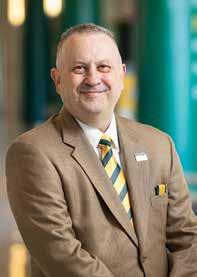
I’m Scott Hine, the new president of the George Mason University Alumni Association. I’m excited and proud to help support you—some 230,000 fellow Patriot alumni—in strengthening your ties to George Mason and finding ways to better connect you with students so that when they graduate, they become similarly engaged with our alma mater.
For me, George Mason is a family afair. My wife, Helen, and I are both 1985 graduates—the first class to graduate in the Patriot Center (now EagleBank Arena). My degree is in decision sciences and hers is in finance. She returned to George Mason and earned a master’s degree in special education in 1999. Our twin daughters, Kayla and Audrey, both graduated from George Mason in 2013 and also earned their master’s degrees here. Our son, Taylor, grew up coming to and volunteering on campus; he graduated from Christopher Newport University in 2015.
I am a U.S. Army veteran and longtime government employee, currently a senior executive at the U.S. Department of Energy.
I am fortunate to be able to devote time, talent, and treasure to the university that played such an integral role in where and who I am today. I have served on the Alumni Association Board and the Scholarship Committee, and I was president of the School of Business Alumni Chapter (now the Costello College of Business). In 2016, I was honored to receive the Alumni Service Award.
As a family, we established the Hine Family Scholarship to support a full-time undergraduate student who encourages and furthers the relationship between students and alumni.
This is a time of visible change on our campuses as an updated brand for George Mason was unveiled in late spring. Although the look is new, the university’s unwavering commitment to excellence remains the same. In a few weeks, we will welcome a new class to campus. Remember how you felt as a freshman? Maybe a little nervous and unsure but eager and excited about your prospects for the future and what you would learn and accomplish here? Make that feeling the catalyst that reconnects you or strengthens your connection to George Mason.
Many thanks to my predecessor Christine Landoll, BS ’89, MS ’92, for her foresight, stewardship, and dedication to enhancing all that the alumni association is and ofers. I plan to continue the good things Christine started—to continue to engage and encourage you to reconnect with and be part of the dynamism that is the hallmark of the George Mason ecosystem.
Many thanks to the outgoing alumni board members and welcome to the new members joining us. I look forward to working with them as well as with you—Patriots, brave and bold—to continue to nurture George Mason’s exponential growth. There is no limit to what we can accomplish when we come together.
Please join me! I can be reached at shine2@gmu.edu.
With Patriot Pride,
Scott Hine, BS Decision Sciences ’85 President, George Mason University Alumni Association
Vincennes University in Vincennes, Indiana. In October 2023, in celebration of the 100th anniversary of the discovery of King Tutankhamun’s tomb, she presented “Howard Carter’s 1922 Discovery of Tutankhamun’s Tomb: Its Impact on Archaeology and the Media” at the University of Southampton (England) Ancient Egypt Society and at the University of Lisbon’s International Colloquium “Tutankhamun and Carter” in February 2023.
Pamela Herod Ograbisz, BSN ’98, is vice president of clinical operations for LocumTenens.com and LT Telehealth in Alpharetta, Georgia. She has been a cardiothoracic nurse practitioner since 2001. During her 25 years of practice, she has been a clinical leader and developed and directed multiple advanced practice programs for hospitals and clinics. She also has held teaching appointments at Kennesaw State and Old Dominion universities in both undergraduate and graduate nursing programs. She continues to conduct research, with a focus on improving sepsis recognition among medical teams through the utilization of high-fdelity simulation, advanced technologies, and telehealth platforms.
Joseph Sakran, BS Biology ’99, director of emergency general surgery and associate chief of the Division of Acute Care Surgery at Johns Hopkins Hospital and associate professor of surgery at the Johns Hopkins School of Medicine, received the 2024 President’s Frontier Award in February. The award includes a $250,000 grant for “scholars poised to be leaders in their feld.” A survivor of gun violence, Sakran founded This is Our Lane, a community of medical professionals who are dedicated to reducing the number of injuries and deaths caused by gun violence. Among his other professional activities, he is board chair and chief medical ofcer of the Brady Center to Prevent Gun Violence.
John Piper, BS Administration of Justice ’00, is deputy city manager for
public safety for Winchester, Virginia, where he oversees the police department, fre and rescue department, the department of social services, and emergency management. Previously, he was Winchester’s chief of police and, prior to that, a major in the Fairfax County Police Department.
Adam Thiel, MPA ’00, is managing director of the City of Philadelphia, appointed by Mayor Cherelle Parker. In the position, Thiel is the city’s chief operating ofcer and a principal member of the mayor’s cabinet. He also is an adjunct professor at George Mason and Georgetown University.
Faith Sayers Phillips, BA History ’01, is an English teacher at Atlee High School in Hanover County (Virginia) Public Schools. She was a fnalist for the R.E.B. Award for Teaching Excellence and received $1,000 in recognition for her achievements in the classroom.
Thomas Spade, BS Accounting ’02, is senior instructor in the department of accounting and business law at the College of Charleston in Charleston, South Carolina. He has a private CPA practice in Mount Pleasant, South Carolina.
Melissa DiGennaro King, PhD Science Education ’03, is a consultant based in the Charlottesville, Virginia, area. She cowrote Solar Decathlon: Building a Renewable Future (Jenny Stanford Publishing, April 2024), a historical narrative about the Solar Decathlon, an award-winning collegiate competition that inspired hundreds of student teams worldwide to design and build solar-powered, net-zero energy dwellings.
(continued on page 44)
Studies show that one in five undergraduates is a parent, a situation that makes them 10 times less likely to complete a degree program than nonparents. Meanwhile, fewer than 2 percent of teen mothers who have a baby before age 18 earn a college degree before they turn 30.
Nicole Lynn Lewis, MPP ’06, has spent the last 14 years trying to change those odds—because it was not so long ago that she was among those pregnant teens trying to finish her senior year of high school and then attend college.
Since Lewis founded the nonprofit Generation Hope in 2010, the organization has helped more than 450 young parents at more than 20 Washington, D.C., area institutions to reach their education goals with financial assistance and mentoring. For those eforts, she was named Washingtonian of the Year for 2023, one of 10 awards presented by Washingtonian magazine to community leaders in various fields.
This is not the first major honor the author of Pregnant Girl: A Story of Teen Motherhood, College, and Creating a Better Future for Young Families has won. In 2020, Lewis was one of 31 inaugural awardees of the Black Voices for Black Justice Fund, an initiative of actress Kerry Washington and philanthropist Wes Moore, now the governor of Maryland.
“My two years [at George Mason] really opened me up to looking at the issues that I was most passionate about through a policy lens, and understanding the role that legislation plays in shaping the lives of all of us—but especially of marginalized people who are under-resourced in our communities,” Lewis says.

While helping individuals in need was the driving force, lessons learned at the Schar School of Policy and Government taught her about the implications of large-scale policy.
“It really helped open my eyes to the systemic impact of what young families are navigating every day,” she says. “I also remember looking at policy holistically and understanding that policies don’t always do what they’re intended to do. It’s important to really be intentional and thoughtful about not only crafting policies but the way that they’re rolled out and how they play out in the lives of the people they’re purporting to serve.”
In August 2021, the university joined Generation Hope’s inaugural FamilyU Cohort, which is a customized, evidence-based, two-year capacity-building experience designed to build and refine institutional competencies to improve student-parent success. Based on national and George Mason-specific qualitative and quantitative research, Generation Hope provided George Mason with a work plan that supported Contemporary Student Services and the Student-Parent Task Force to make direct impact on student-parents and support campus partners in connecting with these students.
Are you an alum who owns a business?
List it in our alumniowned business directory.
Go to go.gmu.edu/ alumnibusiness to fnd out more.
Priyanka Champaneri, BA English ’05, MFA ’10, received a 2024 Creative Writing Fellowship from the National Endowment for the Arts. The fellowships are awarded through an anonymous review process and determined by the applicant’s demonstration of artistic excellence. Champaneri’s writing has appeared in several publications, and her debut novel, The City of Good Death, won the Restless Books Prize for New Immigrant Writing, among several other honors. She is the editorial manager in George Mason’s Ofce of University Branding and an associate editor for Mason Spirit
Janet Wishnow Ritchey, MFA Creative Writing ’05, is the owner of Home Row Editorial. Writing as Sharon Wishnow, she published The Pelican Tide, a novel about the efects of the Deepwater
Horizon oil spill on a family living on Grand Isle, a small Louisiana barrier island. The book was published by Lake Union Publishing in June. Through sales of the book, Ritchey is supporting Restore Grand Isle, which works to help the community recover from the oil spill as well as recent hurricanes.
Aymen Ismail, BS Civil and Infrastructure Engineering ’07, is a crash data system and research manager, leading a team of 10 engineers to establish a crash data system in Qatar.
Amanda Meeker Parrish, MA English ’07, married Wendell Parrish on November 14, 2018. She is a technical writer at Denver Corporate Search.
Stephanie Wong, MA Clinical Psychology ’07, PhD ’11, is program director of the Compensated Work Therapy Program
at the U.S. Department of Veterans Afairs ofce in Palo Alto, California, and is the founder and host of the Color of Success podcast. Her debut book, Cancel the Filter: Realities of a Psychologist, Podcaster, and Working Mother of Color, addresses mental health and intersectionality. It was published by the Color of Success in November 2023.
Earnie Porta, MA History ’08, is the mayor of Occoquan, Virginia. He published Hurricane Agnes in Virginia (The History Press, April 2024), which chronicles the history of hurricanes, specifcally Agnes’s devastating path through the state
Trevor Owens, MA History ’09, PhD Education ’14, is chief research ofcer at the American Institute of Physics (AIP). In this recently created position, he oversees the development of AIP’s new research team—more than 25
social scientists, survey scientists, historians, librarians, and archivists. Prior to joining AIP in February, he was director of digital services at the Library of Congress.
Sara Reyes, BA Confict Analysis and Resolution ’09, is executive director for SELAH Neighborhood Homeless Coalition, a grassroots volunteer-led organization in Los Angeles, California. Previously, she was associate director of The Hunger Project.
Aaron Stuvland, MS Political Science ’09, PhD ’21, is assistant professor of political science at George Fox University in Newberg, Oregon. He also is a Congressional Fellow at the U.S. Senate.
GEORGE MASON UNIVERSITY ALUMNI ASSOCIATION BOARD OF DIRECTORS 2024–25
Scott Hine, BS ’85, President
Christine Landoll, BS ’89, MS ’92, Immediate Past President
Jef Fissel, BS ’06, President-Elect
Andy Gibson, BA ’02, Vice President, Alumni Engagement
Stephanie Zimmermann, BS ’93, Vice President, Student Engagement
Kristen Taylor, BA ’88, Vice President, Volunteerism
Michael D. Marino, BA ’11, Vice President, Partnerships and Sponsorships
Sawyer Dullaghan, BS ’15, Historian
John Hall, BS ’93, Treasurer
Chaimaa Fekkak, BA ’13, Director-at-Large (2023–25)
Suehaila Nabulsi, BA ’00, Director-at-Large (2023–25)
Lisa Rosser, BA ’89, Director-at-Large (2023–25)
Janae Johnson, BS ’11, Director-at-Large (2024–26)
Daniel Williams, MS ’11, Director-at-Large (2024–26)
Kathleen Wills, BS ’15, JD ’20, Director-at-Large (2024–26)
Deion Maith, BA ’20, President, Black Alumni Chapter
Charles Davidson, PhD ’16, President, Carter School for Peace and Confict Resolution Alumni Chapter
Thomas Ammazzalorso, MA ’04, CERG ’05, MEd ’10, President, College of Education and Human Development Alumni Chapter
David P. Brown, PhD ’04, President, College of Engineering and Computing Alumni Chapter
Shawn L. Brann, BA ’92, MEd ’95, CERG ’06, President, College of Humanities and Social Sciences Alumni Chapter
Vincent Pereira, MHA ’14, President, College of Public Health Alumni Chapter
Michelle Ryan, PhD ’15, President, College of Science Alumni Chapter
(continued on page 46)
Vacant, President, College of Visual and Performing Arts Alumni Chapter
Kevin Connor, MBA ’22, President, Costello College Alumni Chapter
Jorge Velasquez, BA ’14, President, Early Identifcation Program Alumni Chapter
Leigh Ann Dewitte, BS ’15, President, Green Machine Ensembles Alumni Chapter
Melissa Alberto, BA ’19, President, Honors College Alumni Chapter
David Miller, PhD ’15, Innovation and Entrepreneurship Alumni Chapter
Xavier Clark, MPA ’18, PhD ’23, President, Lambda Alumni Chapter
Nely Garcia, BS ’21, President, Latino Alumni Chapter
Vacant, President, Scalia Law School Alumni Chapter
Brennan Georgianni, MPP ’16, President, Schar School of Policy and Government Alumni Chapter
Philip Pinero, BS ’20, President, Veterans Alumni Chapter
If you would like to become involved in the Alumni Association, please contact the Ofce of Alumni Relations at alumni@gmu.edu.
George Mason University alum Gary T. Taylor, MSW ‘15, is destigmatizing mental health support and normalizing therapy in the Black community one barbershop at a time.
“Barbershops are this safe space for Black men. This is where men may go to talk through things, have big debates, talk about sports,” says Taylor, who has been working with local barbershops in the Rappahannock region of Virginia since 2022 to foster healthy discussions about mental health by educating barbers on “mental health first aid” for their patrons.
Given the trusted role that barbers often play in Black men’s lives, it seemed like a natural place for Taylor to reach men about mental health. Working in partnership with the Rappahannock Area Community Service Board, Taylor realized he could bring his crisis therapy experience into the community through “barbershop talks”—informal group discussions with the barber, the shop patrons, and a trained social worker.
Taylor, who is a licensed clinical social worker and
an associate professor in the department of social work at Virginia State University, has found that barbershop talks play an important role in normalizing discussing issues and going to therapy. With the suicide rate for young Black men increasing over the past 10 years, Taylor says there is a need for talks like these that can help point participants in the right direction to get therapy or substance abuse resources. He relays to participants that seeking mental health support is like taking your car in for an oil change to keep it running properly.
“Most of the time when you talk to barbers, they’ll tell you they’re almost de facto therapists and social workers,” says Taylor. “So we wanted to equip barbers with necessary resources in case somebody comes in and it’s a crisis or they’re really struggling and don’t know where to go.”
He also notes that with the rise of substance abuse disorder cases and related overdoses, the barbershop talks now include Narcan training for the barbers and patrons.
Taylor has completed more than five barbershop talks in the Rappahannock region and is working with female colleagues to begin salon talks this year. As an educator, Taylor is also passionate about “passing the baton” to the next generation
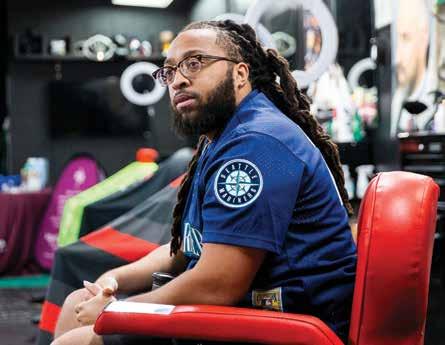
by getting more Black people—particularly Black Gary T. Taylor uses his men—into the social work profession to meet the social work skills when growing demand. facilitating barbershop
“There is a growing need for diversity in the social conversations about work profession,” he says. “That cultural awareness mental health. piece for the Black community and having more Black social workers and practitioners—it’s very important as we progress in the field.”
—Michelle Thompson
“We wanted to equip barbers with necessary resources in case somebody comes in and it’s a crisis or they’re really struggling and don’t know where to go.”
Ravi Saraswathi, MS Technology Management ’10, is vice president and chief technology ofcer of the U.S. cloud and ADAI practice at Kyndryl, an information technology infrastructure provider. Saraswathi was named to the company’s 2024 class of fellows and distinguished engineers in recognition of his contributions to helping solve industry-wide challenges and enabling customer innovation and success. He specializes in creating cloud-native solutions that address the business and technical challenges faced by many of Kyndryl’s largest customers.
Kyle Canavera, MS Computer Science ’12, is partner in the San Diego ofce of Perkins Coie, where he focuses his practice on patent litigation. He is experienced in artifcial intelligence and machine learning, cellular- and
networking-related technology, video coding, and software-based subject matter. He has written more than 100 patent applications and represents both plaintifs and defendants in U.S. district courts, the U.S. Patent and Trademark Ofce, and the International Trade Commission.
Emily Swain, BA Global Afairs ’15, and Nathan LaPierre, BS Computer Software Engineering ’15, who lived on the same foor of Eastern Shore during their frst year at George Mason, were engaged in December 2023. The proposal happened at Mason Pond, the site of many fond college memories. She is assistant branch manager at Kings Park Library and TechLab manager at Sherwood Regional Library. He is a postdoctoral scholar in the department of human genetics at the University of Chicago.
Bilal Wahab, PhD Public Policy ’15, has been named the president of the American University of Iraq, Sulaimani (AUIS). The not-for-proft university, founded in 2007, is among the top-ranked private universities in the Kurdistan region. As an AUIS faculty member from 2012 to 2016, Wahab taught courses on the petroleum industry, public policy, and international politics, and founded the school’s Center for the Development of Natural Resources.
Sarah Shay, BS Civil and Infrastructure Engineering ’19, was promoted to principal engineer at Hazen and Sawyer, after passing the Principles and Practice of Engineering exam in fall 2023. Previously, she was an engineer at a water resource engineering frm for fve years. She is now a licensed professional civil engineer in the Commonwealth of Virginia.
Samantha Warren DeMocker, MS Exercise, Fitness, and Health Promotion ’20, is the owner of Strongest You by Samantha, a ftness, nutrition, and wellness coaching business. In the four years since she started the company, it has served more than 200 clients, creating positive health outcomes and results for longevity.
Ryen Middleton, BA Global Afairs ’22, MS Public Health ’23, is customer service coordinator in George Mason University Career Services. He received the Promise Award for Rising Graduate Student from the College of Public Health’s Department of Global and Community Health.
George DeGroat, MSW ’23, is an instructor at Newport News Shipbuilding in Newport News, Virginia. He also is the founder of the
Robert C. Melton, BA Business and Public Administration ’72, d. November 19, 2023
Janet N. Sommerfeldt, MEd Elementary Education ’72, d. October 25, 2023
Thelma L. Spencer, BA English ’72, MEd Curriculum and Instruction ’75, d. October 23, 2023
Doris A. Harwitz, MEd Elementary Education ’73, d. March 31, 2024
David R. Vernon, BS Business Administration ’73, d. March 4, 2024
Christopher J. Collins, BS Biology ’74, d. March 29, 2024
Louise E. Magruder, BS Biology ’74, d. December 2, 2023
Patricia Q. Stubbing, BS Social Work ’75, MEd Counseling and Development ’83, d. December 30, 2023
Douglas C. Boulter, BS Business Administration ’76, d. December 15, 2023
Robert C. Hornbrook, BA Biology ’76, d. March 29, 2024
Cheryl L. Pleasant, BA Sociology ‘76, d. November 25, 2023
Paul J. Riley, JD ’76, d. February 8, 2024
Eleanor L. Watts, BA Sociology ’76, d. January 28, 2024
Constance L. Criscuolo, BA Psychology ’77, MA ’86, d. February 10, 2024
Jefrey M. Perkins, BS Chemistry ’77, d. February 4, 2024
Suellen F. Pometto, BS Biology ‘77, d. February 26, 2024
Gariel V. Burchett, BS Business Administration ’78, d. March 30, 2024
Larey W. McCorkle, BS Business Administration ’78, d. July 18, 2013
Mary Lou Stacey, BSN ’78, d. November 3, 2023
Ronald L. Bullock, BS Business Administration ’79, d. April 15, 2024
Edward Brown Foundation and Inspire You Counseling, which refect his passion for social work and mental health. The foundation provides programs and resources for those who come from disadvantaged backgrounds. Previously, DeGroat established Exposure Challenge, which ofered local trips for young people to provide a diferent, better perspective on life than what they would fnd in a gang.
Zakeyah Frazier, MEd Counseling ’23, is a career advisor in George Mason University Career Services. She received the Distinguished Alumni Award at the Black Excellence Gala 2024, in recognition of her continued support to Black/African heritage students through service and mentorship.
Patricia Ann Clark, BS Business Administration ‘79, d. January 4, 2024
Charles L. Gebhart, BS Business Administration ’79, d. January 30, 2024
Wayne E. Remes, BA History ’79, d. March 13, 2024
Barbara F. Elliott, BSN ’80, d. February 13, 2024
Mary C. Garner, JD ’80, d. March 9, 2024
Gregory T. Lyons, BS Business Administration ’80, MBA ’87, d. April 13, 2024
Carol Y. Butler, MEd Elementary Education ’81, d. March 30, 2024
Dennis L. Cordell Sr., MA History ’81, d. March 14, 2024
Mary E. Cundari-Kinnear, BIS ’81, d. November 30, 2023
Maria H. Malagon, MEd Secondary Education ’81, d. March 22, 2024
Brenda L. Tychan, MEd Curriculum and Instruction ’81, d. December 4, 2023
Nancy H. Welker, MEd Elementary Education ’81, d. January 12, 2024
Susan L. Curcio, BSN ’82, d. April 7, 2024
Linda J. McElroy, BA Psychology ’82, d. November 3, 2023
Carolyn C. Pomponio, BIS ’82, d. November 19, 2023
Marian C. Fiedor, BSN ’83, d. November 28, 2023
Zayda L. McCorkle, BA Spanish ’83, MA Foreign Languages ’95, d. December 9, 2023
Harriette A. Reaves, MEd Curriculum and Instruction ’83, d. December 19, 2023
Candice L. Blake, MA Psychology ’85, PsyD ’87, d. January 30, 2024
Mark A. Cole, BS Public Administration ’85, d. February 11, 2024
Robert G. Massey, BS Mathematics ’85, d. March 20, 2024
Mary O. Thompson, JD ’85, d. March 20, 2024
Antonia M. Murto, BIS ’86, d. January 22, 2024
Irvin L. Muszynski, JD ’86, d. October 31, 2023
Rajaie E. Qubain, BS Computer Science ’87, d. February 25, 2022
Dinah Walters, BS Computer Science ’87, d. March 12, 2024
John D. Grifn, BS Accounting ’88, d. September 29, 2023
Cynthia J. Wood, MA History ’88, d. March 8, 2024
Judith Anne LoPresti, BS Marketing ’89, d. March 2, 2024
Kelly S. Martin, BSEd Physical Education ’89, d. November 8, 2023
Deborah L. McDonald, MEd Curriculum and Instruction ’89, d. November 10, 2023
Nancy L. McFadden, BSEd Early Education ’89, MEd Curriculum and Instruction ’93, d. March 9, 2024
Peter B. Walker, MA Foreign Languages ’89, d. December 16, 2023
Brian L. Black, BS Public Administration ’90, d. November 8, 2023
David L. Clark, JD ’90, d. November 28, 2023
Patricia A. Cundari, MEd Elementary Education ’90, d. December 22, 2023
Brian K. Hether, MS Information Systems ’90, d. January 1, 2024
Darren C. Lyons, BA History ’90, d. February 28, 2024
Marcia S. Reass, MEd Special Education ’90, d. December 3, 2023
Hilda M. Maness, BIS ’91, d. March 14, 2024
Robert J. Wyatt, BA Biology ’91, d. December 4, 2023
Anne K. Groves, BA English ’92, MEd Curriculum and Instruction ‘99, d. February 8, 2024
John M. Koloshey, BA Economics ’92, d. October 31, 2023
Nancy A. Pfaf, MSN ’92, d. December 29, 2023
Diane E. Flyer, JD ’94, d. March 1, 2024
John E. O’Rourke, MA History ’94, d. January 21, 2024
Jefrey A. Taylor, BA Economics ’94, d. December 30, 2023
Eileen M. Halvorsen, BS Accounting ’95, d. November 21, 2023
Joseph M. LoPresti Jr., MEd Curriculum and Instruction ’95, d. March 27, 2024
Carol B. Wahler, BS Social Work ’95, d. December 4, 2023
Donna Gleason O’Neill, MEd Curriculum and Instruction ’96, d. February 25, 2024
Rachel M. Chesser, MA History ’97, d. January 25, 2024
Ann J. Rudisill, MA New Professional Studies ’98, d. December 26, 2023
John A. Stowe, BS Accounting ’98, d. February 14, 2024
Katherine A. Cleve, BA Communication ’99, d. December 5, 2023
Marilyn M. Moran, MA English ’99, d. December 23, 2023
James E. Zelasko, JD ’03, d. January 18, 2024
Felicia E. Phillips, BA History ’04, d. January 3, 2024
Mark D. Sortzi, BS Business Administration ’04, d. February 18, 2024
Atmospheric, Oceanic, and Earth Sciences, passed away on May 5, 2024, after a courageous battle against pancreatic cancer. He was 64. McBride joined George Mason in the Department of Environmental Science and Policy in 1997 after receiving his PhD in geological oceanography and geology from Louisiana State University. He channeled his passion for coastal geology, geomorphology, and oceanography at George Mason and served as a resident faculty fellow at the Potomac Environmental Research and Education Center. An internationally recognized expert in coastal geology and sedimentology, McBride wrote more than 100 scientifc publications; taught feld courses on volcanoes and glaciers in Colombia; was a visiting principal fellow at the University of Wollongong, Australia; and codirected George Mason’s Geology Field Camp in Camerino, Italy, which focused on geologic feld mapping in the Apennine Mountains and around Naples and Rome
Nancy C. Rose, BS Psychology ’05, MEd Counseling and Development ’09, d. March 24, 2024
James P. Briggs III, MS Telecommunications ’06, d. January 6, 2024
Brent J. Lancaster, BA Economics ’06, d. January 19, 2024
Aleksandar Lazarevich, PhD Information Technology ’06, d. March 5, 2024
Rachel H. Ziemba, MBA ’06, d. March 27, 2024
Gabriel S. Cohen, BA Government and International Politics ’07, d. November 16, 2023
Leigh Hilton, BA Art (History) ’07, d. November 19, 2023
Kevin T. Moriarty, MS Geographic and Cartographic Sciences ’07, d. October 23, 2023
Morgan J. Turrell, MA Transportation Policy, Operations, and Logistics ’07, d. March 1, 2024
Daniel C. Easley, JD ’08, MA International Commerce and Policy ’09, d. December 11, 2023
Victor L. Lee, BS Accounting ’09, MBA ’21, d. November 9, 2023
Joan R. Rothenberg, JD ’09, d. January 28, 2024
Megan K. Fraser, BS Biology ’10, d. December 10, 2023
Brian M. Jordan, MA History ’10, d. March 17, 2024
Meghan Kelleher, MEd Curriculum and Instruction ’10, d. March 21, 2024
Melanie A. VanHorn, MS Software Engineering ’13, d. December 18, 2023
Randolph J. Urick, BFA Art and Visual Technology ’14, d. November 30, 2023
Karen J. Houston, DA Education (Community College) ’15, d. April 8, 2024
Jennifer M. Brothers, MSW ’16, d. January 6, 2024
Traci K. Selden, MEd Education Leadership ’18, d. November 14, 2023
Jimmy A. Chiou, MS Computer Science ’23, d. November 1, 2023
Ashley D. Robinson, Former Student, d. March 14, 2024
Joy Fraser, d. December 17, 2023
Robert J. Muscat, d. January 10, 2024
F. Duke Perry, d. February 22,2024
Mark H. Sagof, d. December 12, 2023
John E. Vasquez, d. April 12, 2024
Alexander E. R. Woodcock, d. March 16, 2024
Randolph “Randy” McBride, a professor of geology in the Department of Valery Soyfer, Distinguished University Professor Emeritus, passed away on June 11, 2024. He was 87. Soyfer joined George Mason in 1990 as a Robinson Professor, and from 1993 to 2016, he served as a Distinguished University Professor in the College of Science. Prior to George Mason, he was founding scientifc director of the Research Institute for Applied Molecular Biology and Genetics in Moscow. In the 1980s, his opposition to the Soviet regime led to his removal from the position. As a result of a U.S. grassroots campaign, as well as appeals to the Soviet government from elected ofcials including President Ronald Reagan, Soyfer was stripped of Soviet citizenship and allowed to leave the USSR. In 1996, he was a recipient of the Gregor Johann Mendel Honorary Medal for Merit in the Biological Sciences awarded by the Czech Academy of Sciences. In addition to his pioneering work on DNA mutagenesis and DNA repair, Soyfer was a prominent historian of science and a human rights activist. He published many books and articles on the history of Soviet biology and science that ofered important insights on the role of science in a totalitarian society.

The Student Apartments, George Mason’s frst on-campus housing, opened in October 1977 and housed 498 students. The two-, four-, and six-person apartments were originally reserved for exchange students, student-athletes, and students with physical disabilities. Any remaining spaces were open for out-of-state and commuter students.
Construction delays caused the university to temporarily house students in Fairfax City hotel rooms and run shuttles to the Fairfax Campus at the start of the fall 1977 semester. Five of the nine buildings opened on October 15, 1977, when residents were fnally able to move in.
The Student Apartments were closed at the end of the spring 2018 semester and razed in July of that year. The Foragers’ Forest now occupies that land (see story on page 9).
George Mason now has almost 20 residence halls on the Fairfax Campus, which more than 6,000 students call home. There is also graduate student housing available at Beacon Hall on the Science and Technology Campus.
Read more about the university’s frst housing complex on the University Libraries’ Special Collections Research Center blog at go.gmu.edu/SCRCblog.
More than 50 years ago, a group of community leaders had a vision for a new kind of university, designed to be responsive to the needs of a region on the verge of unprecedented growth and boundless opportunities.
Today, that university—George Mason University—is fulflling its promise to our community.
We are Virginia’s largest public research university, ofering access to educational excellence to more than 40,000 students representing all 50 states and 130 countries. We are a cultural center and an economic driver, serving education, business, and government, and producing a tech talent pipeline that drives innovation and supports bright futures for our graduates.
That is who we are now.
Our $1 billion comprehensive campaign— Mason Now: Power the Possible—will support student success, research, and innovation as we continue to respond to the ever-evolving demands of our region and our world. Join this bold project to fuel our growth for the next 50 years— and beyond.
Support Mason Now gmu.edu/masonnow

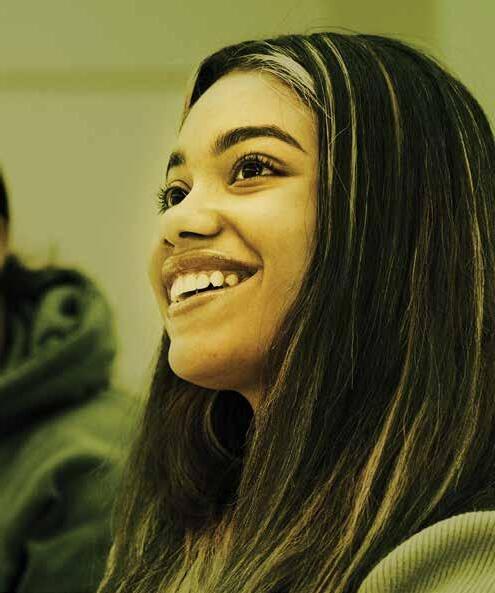
#MasonNation
gmu.edu
@georgemason
@georgemasonu
@georgemasonuniversity
@georgemasonu
4400 University Drive, MS 3B3 Fairfax, Virginia 22030
IT’S LIT When George Mason University launched a new logo in April, light projection displays on all three Virginia campuses glowed with the new brand. Photo
